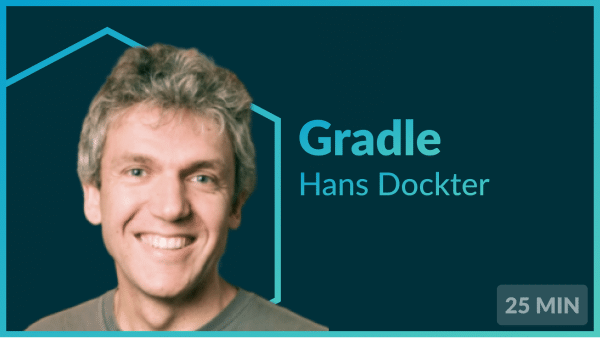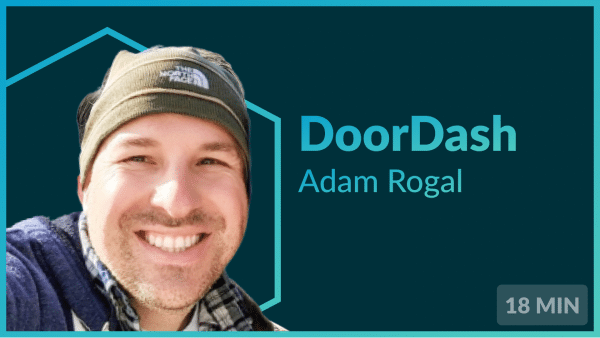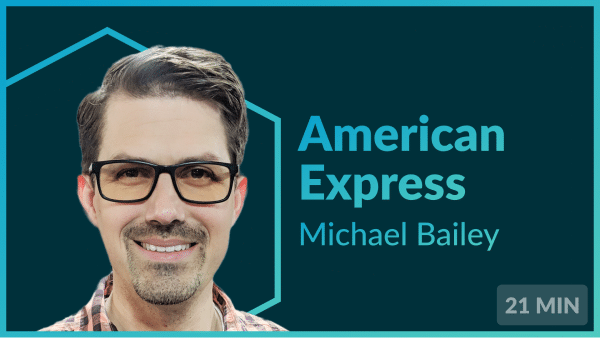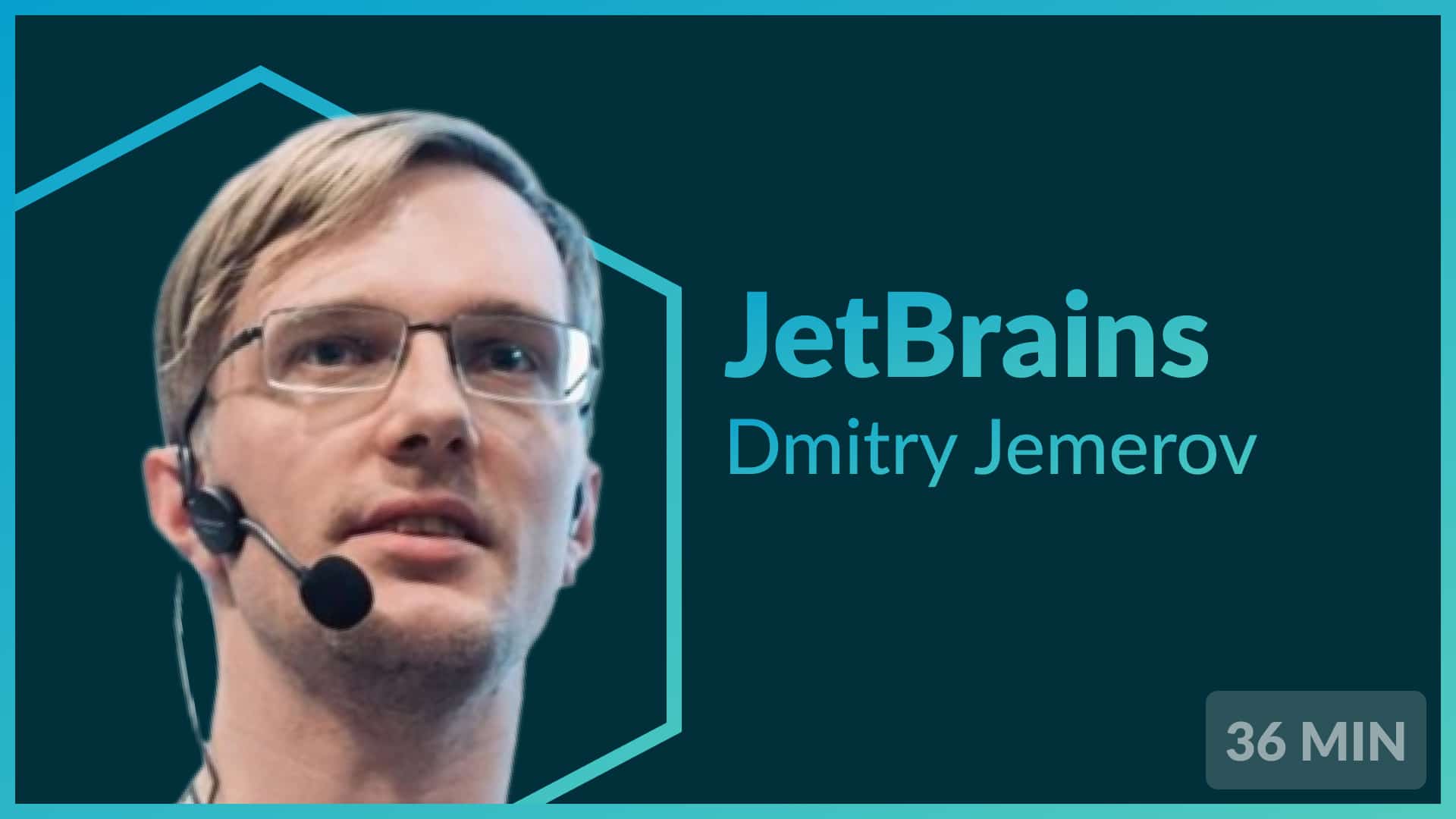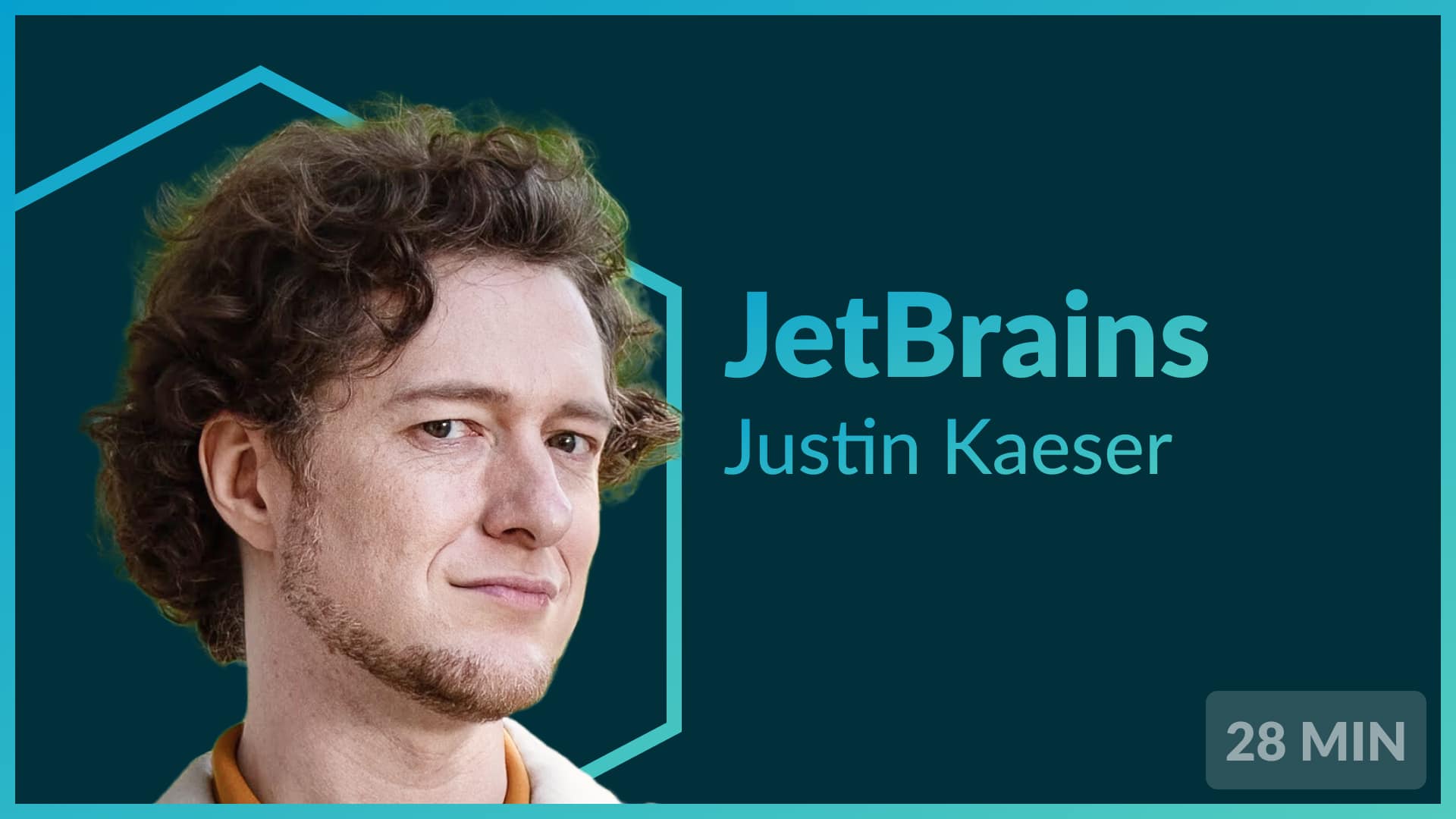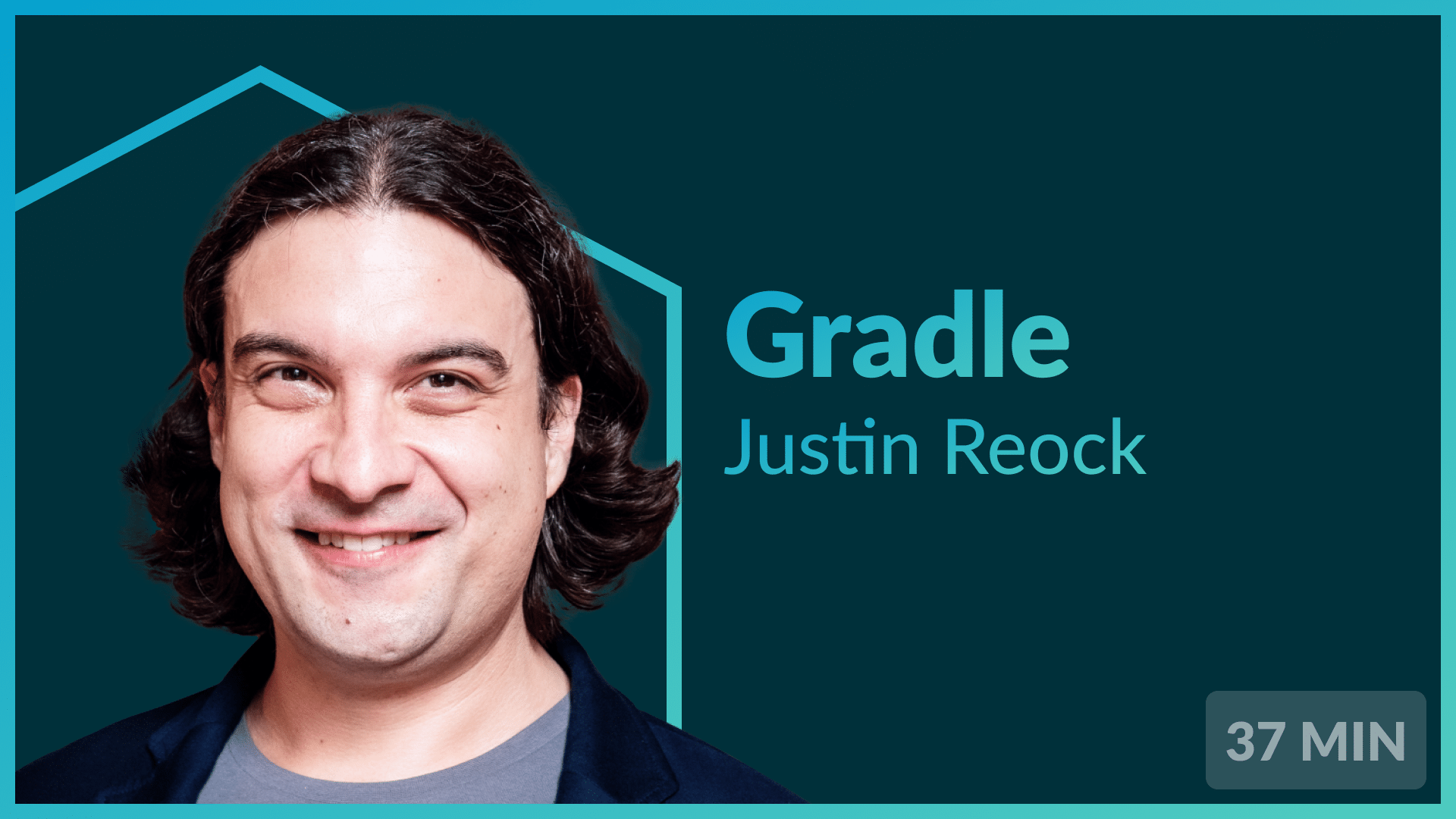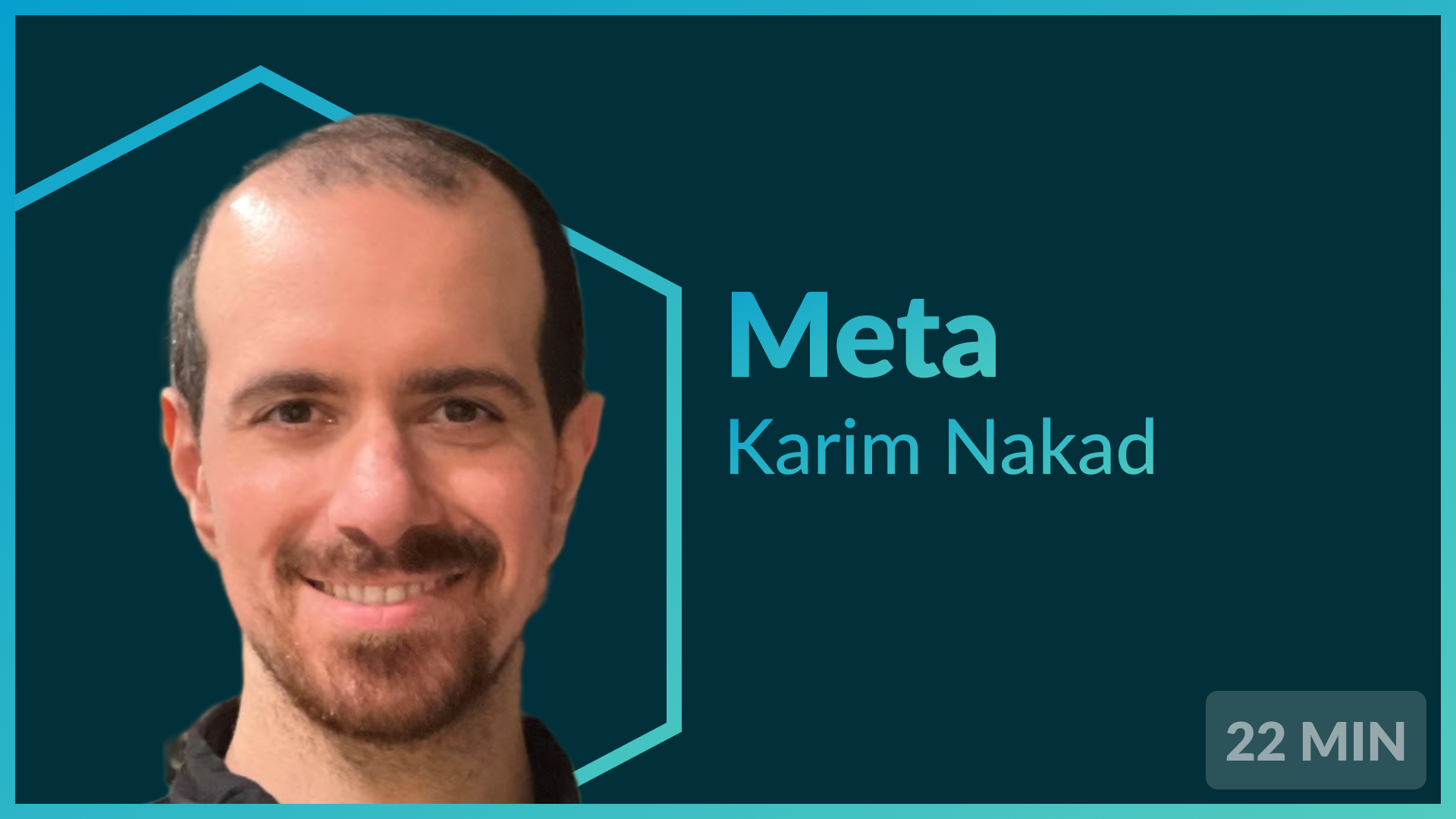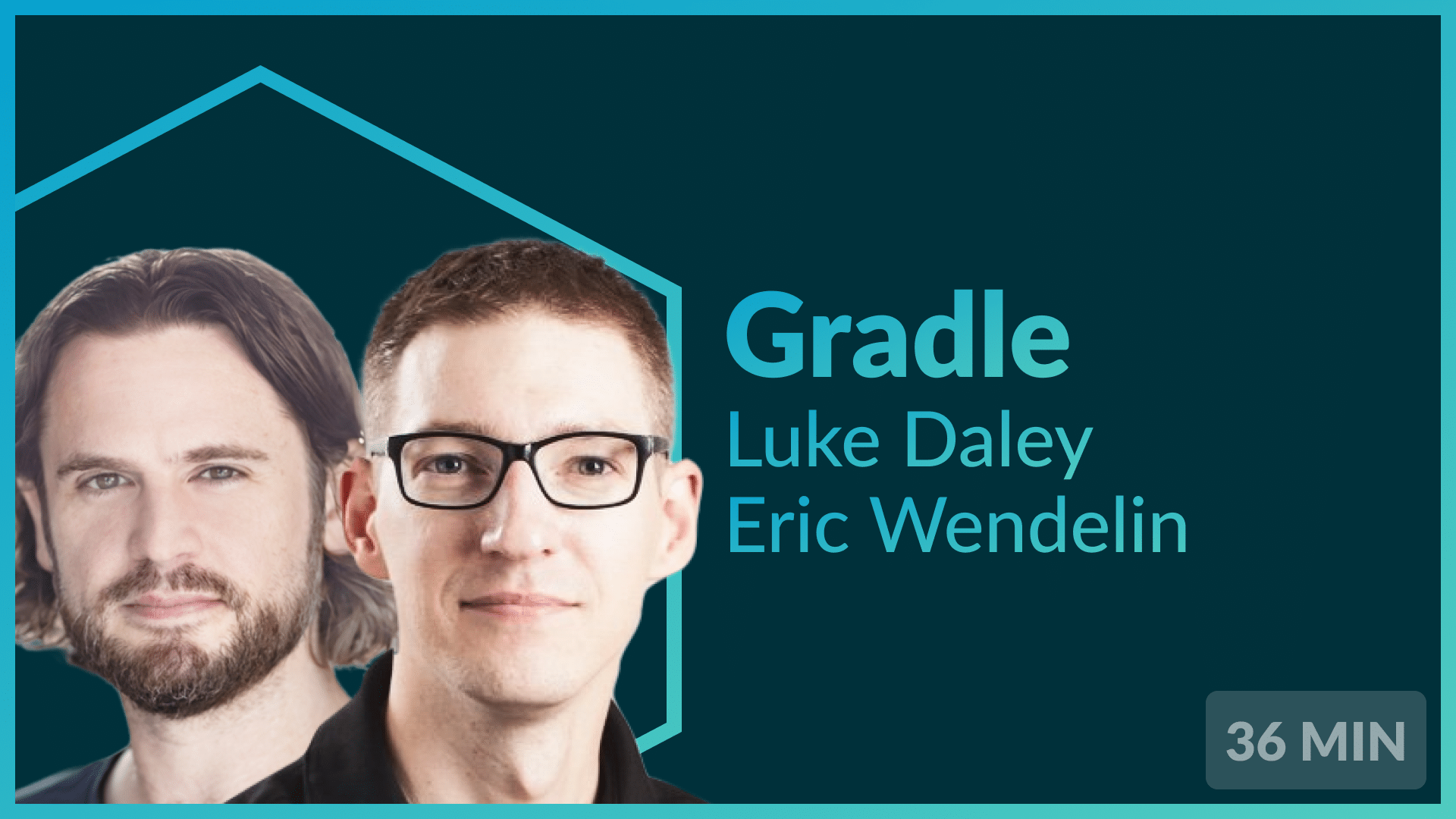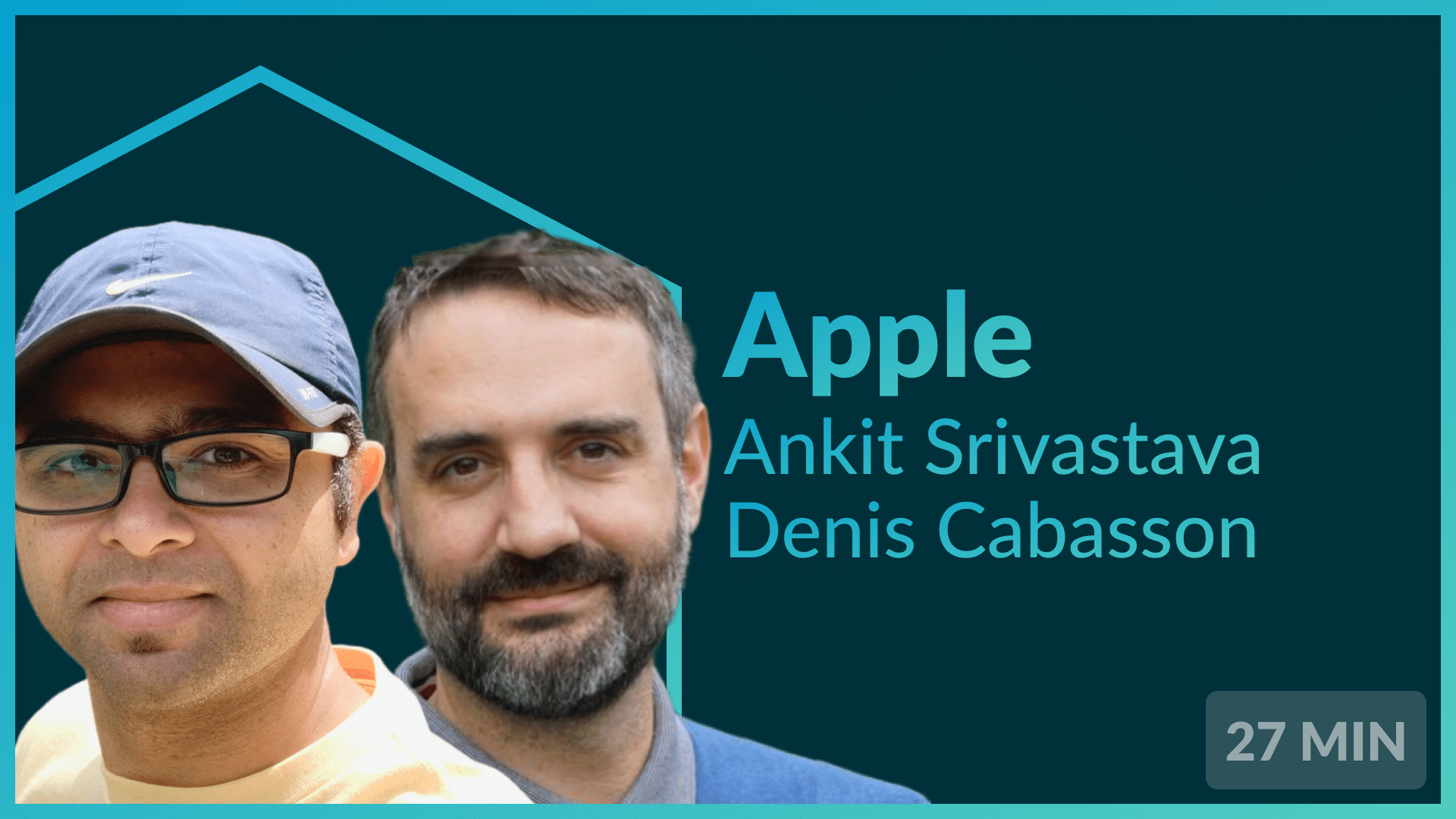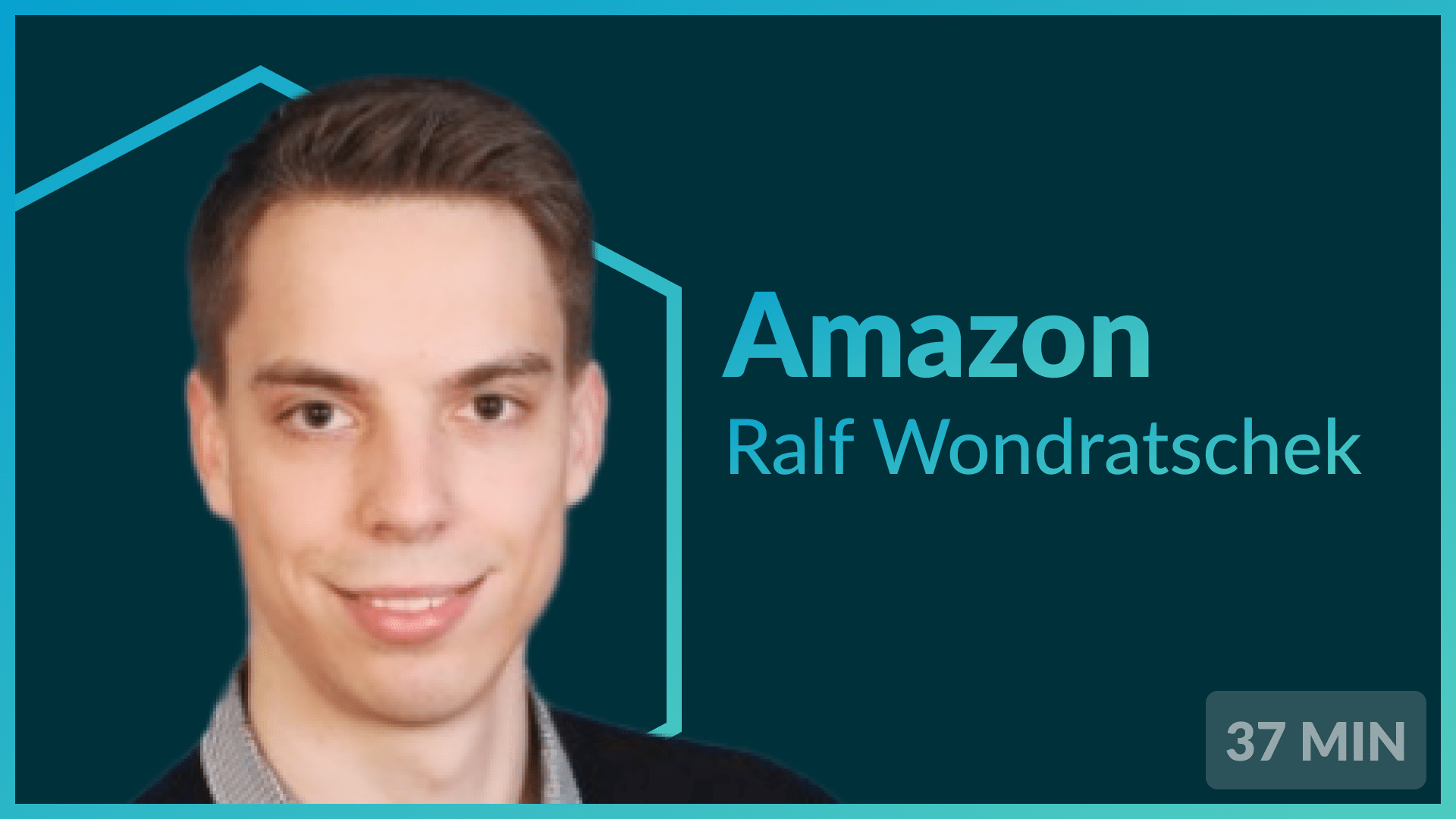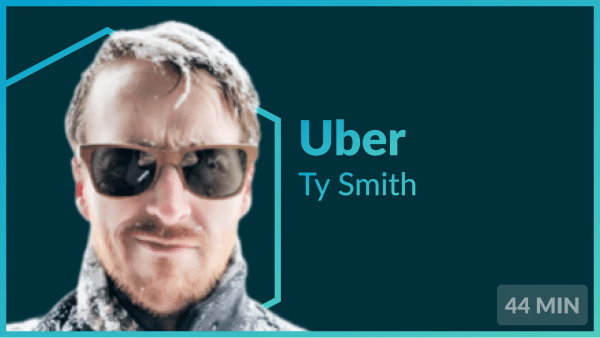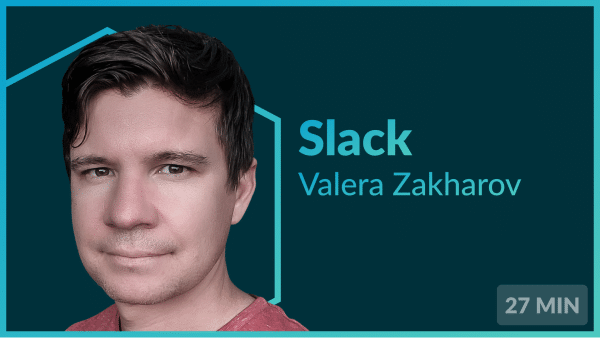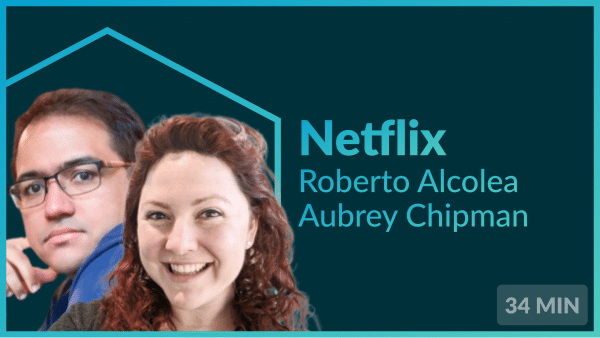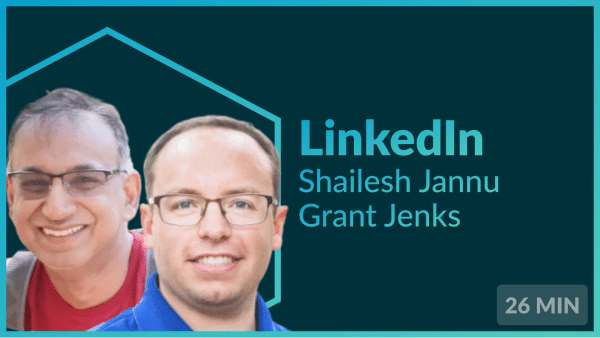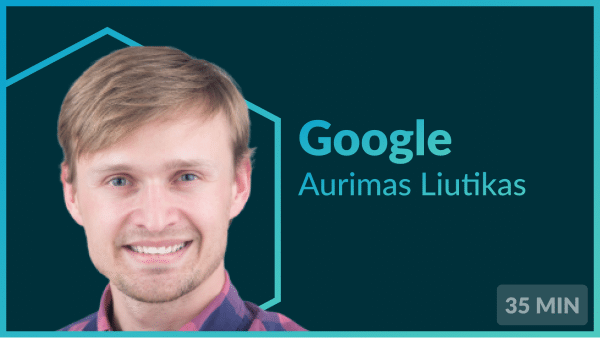
2023 Highlights
Check out a collection of top moments from the 2023 Developer Productivity Engineering Summit in San Francisco.
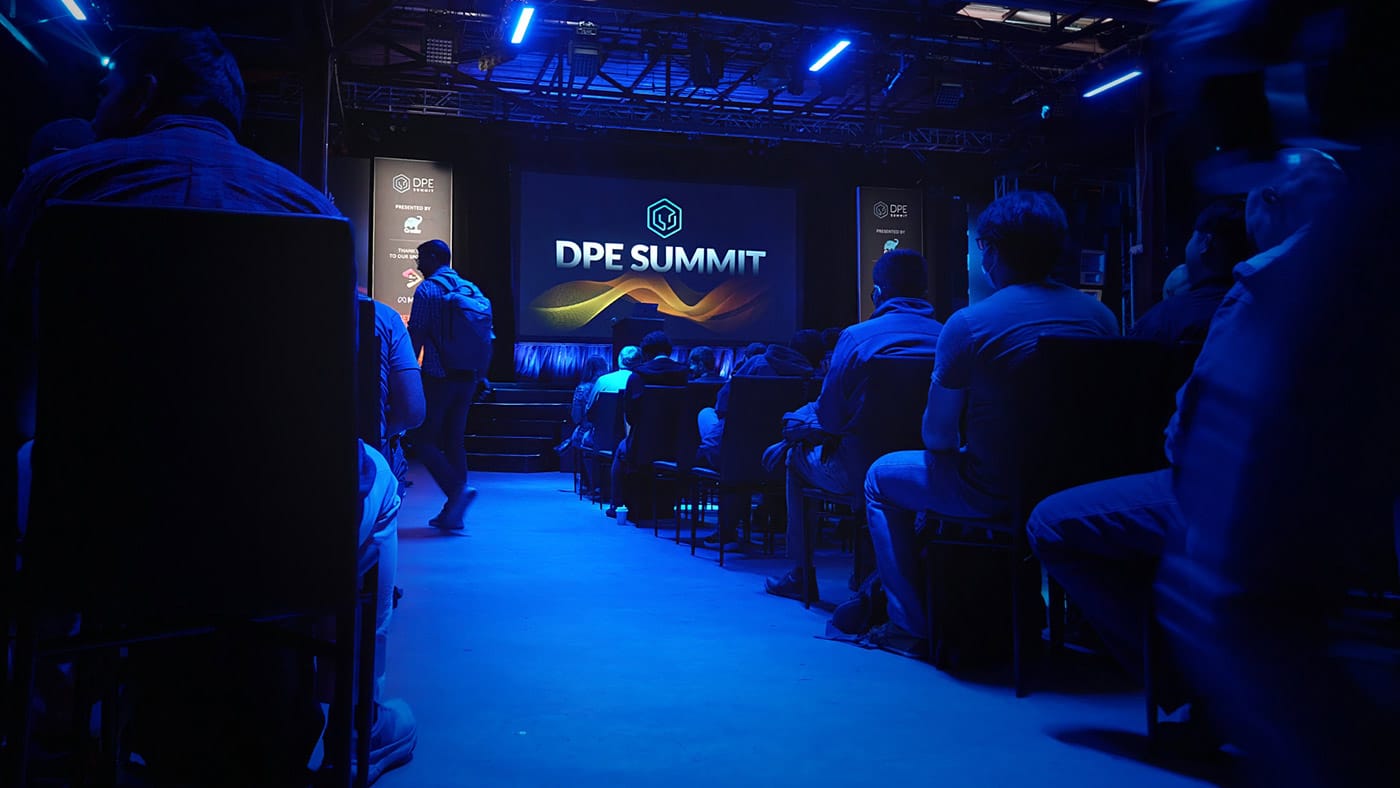
Watch the video
Watch the Sessions
Explore presentation recordings and slides from our 2023 Summit speakers. You can browse them all or filter by topic and brand.
Monday, Sept 20
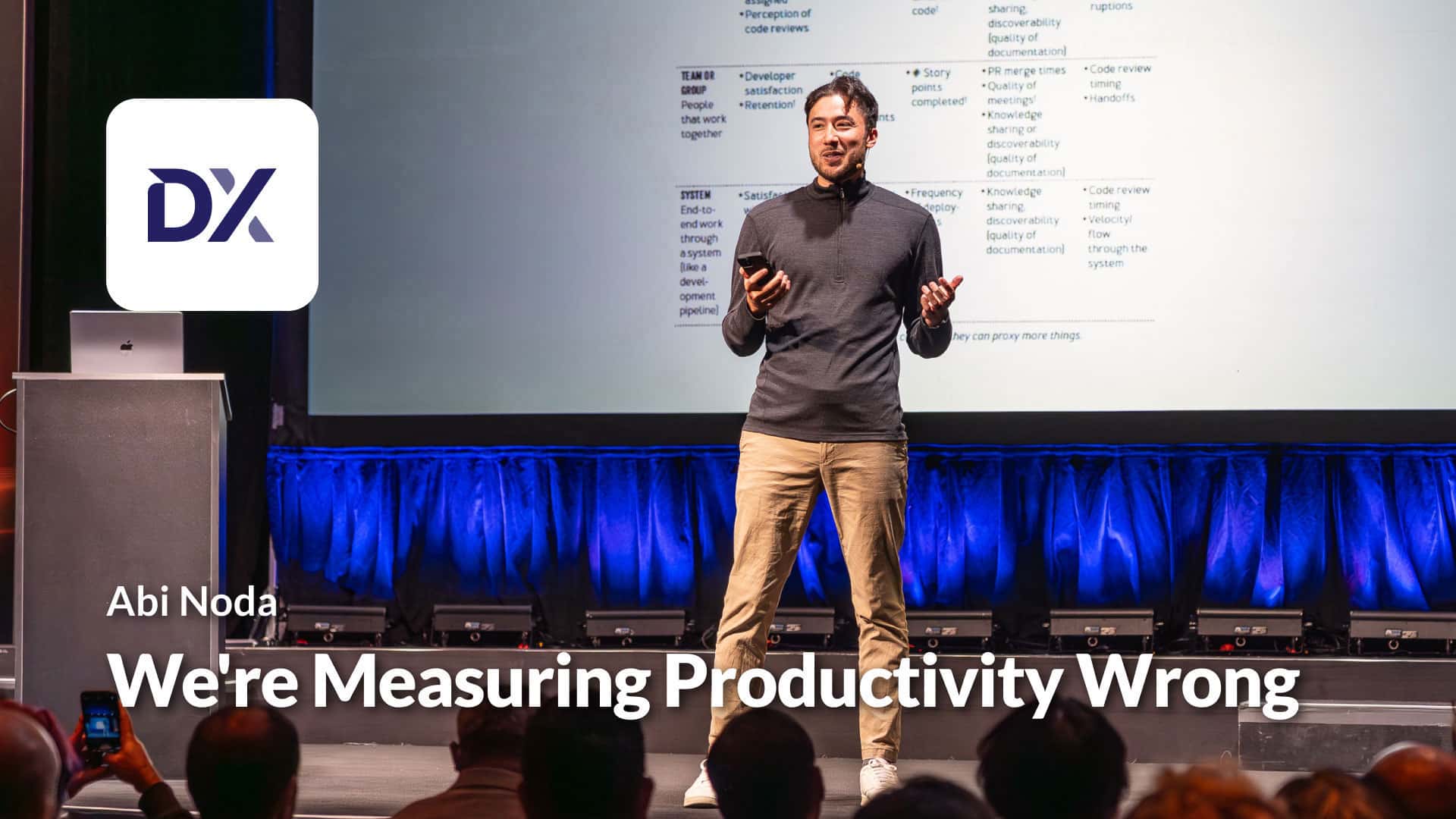
We’re Measuring Productivity Wrong
Abi at DX addresses ongoing challenges in developer productivity that persist despite the last 10-15 years of technological advancement. He emphasizes shifting from traditional metrics to staff-ranked productivity, aligning with outcome-focused DPE principles, and tackling issues like slow builds and context-switching.
Watch the video 
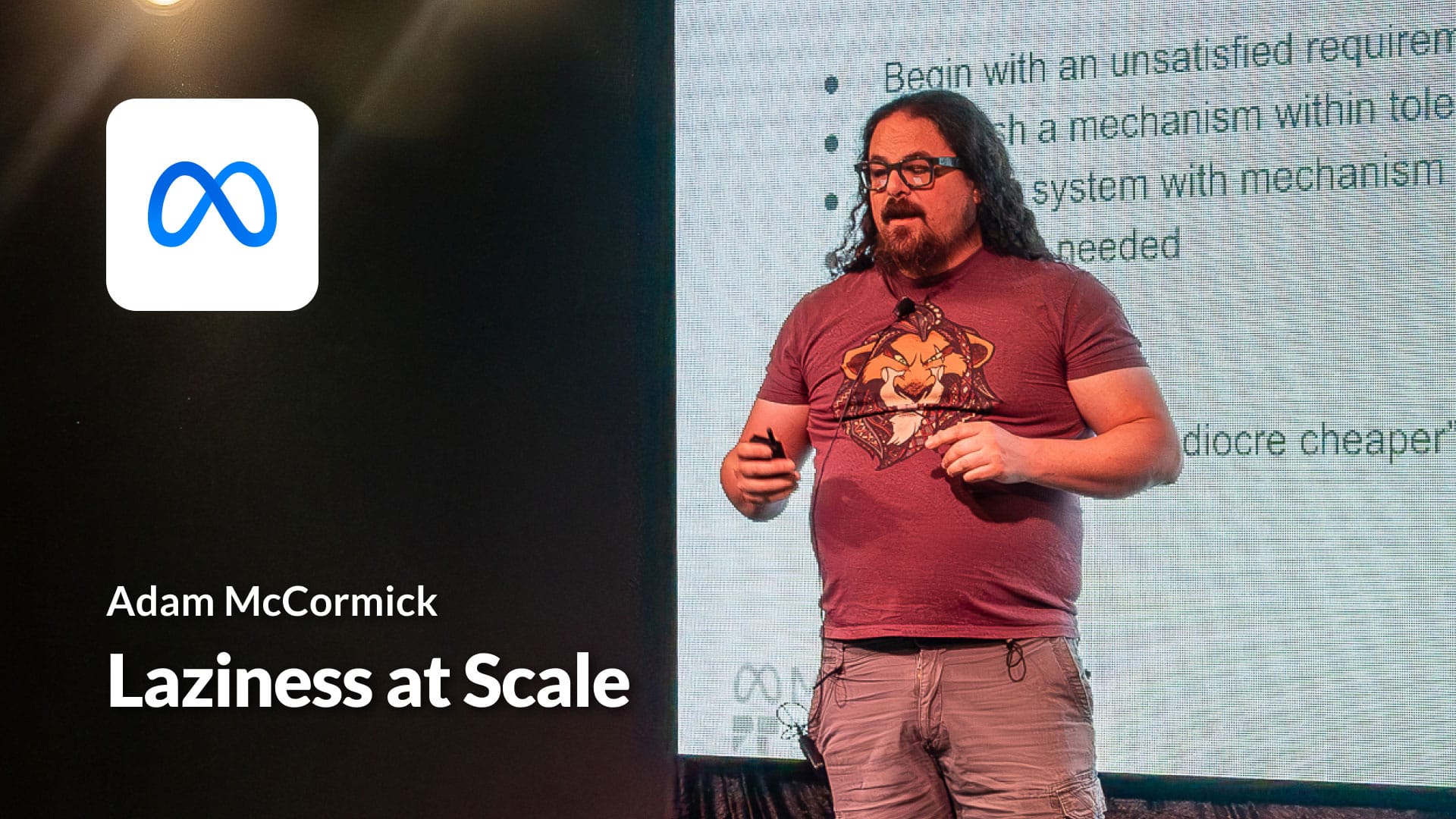
Laziness at Scale
Adam at Meta diverges from the technical aspects of DPE, delving into the role of psychology in decision-making. He analyzes developer and manager characteristics and emphasizes the value of laziness by avoiding unnecessary work (a key DPE principle). Sharing anecdotes, he emphasizes the value of saying “no”, showcases different manager archetypes, and explains how to enhance personal productivity for organizational recognition.
Watch the video 
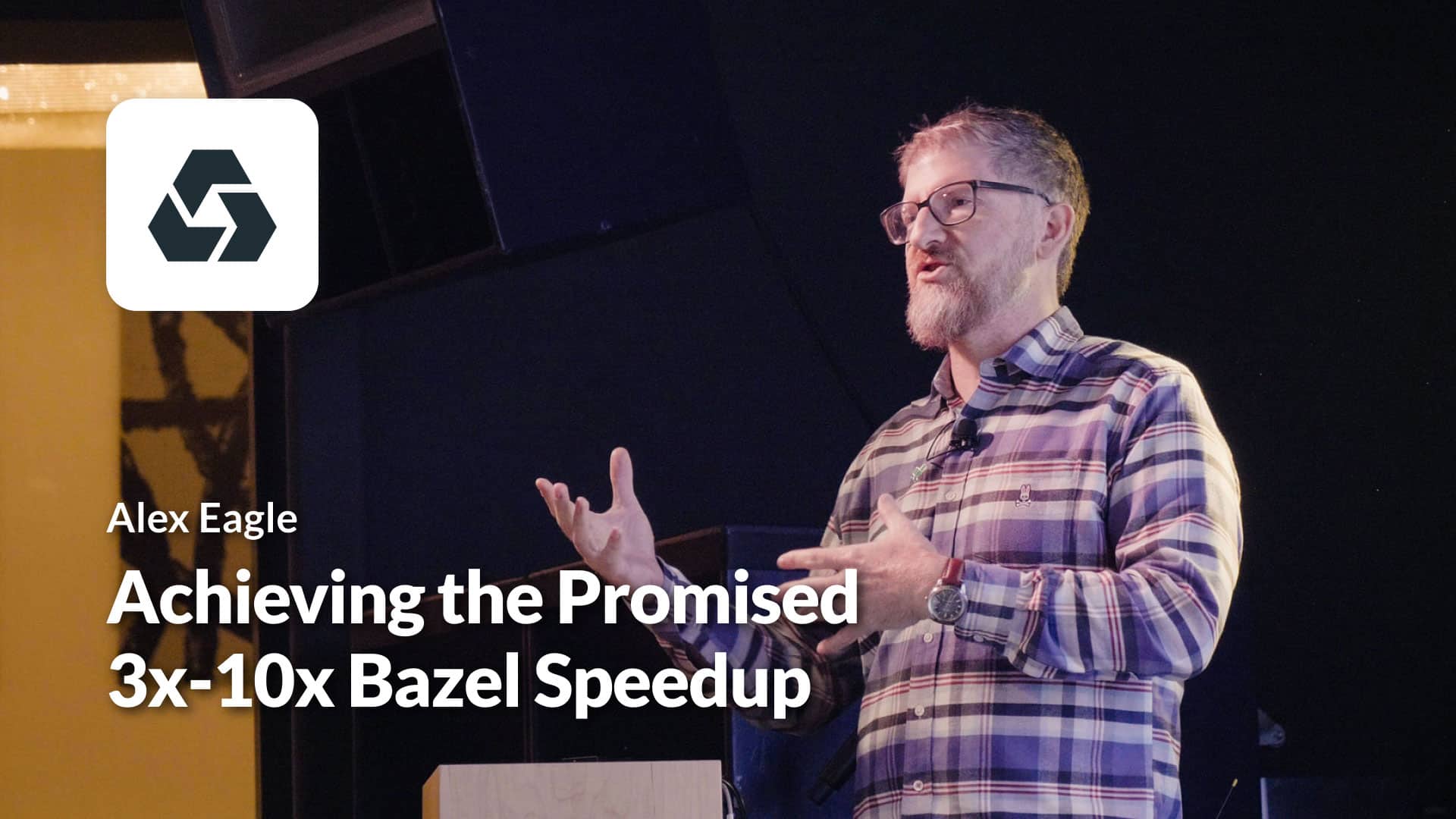
Achieving the Promised 3x-10x Bazel Speedup
Alex at Aspect looks into the first Bazel users who reported 3-10x speed-ups. Who are they? It turns out most users didn’t experience this out of the box. His talk touches on specific optimization aspects of increasing developer productivity with Bazel, including non-persistent workers, low cache hit rates, network and cluster issues, and the dark side of remote execution.
Watch the video 
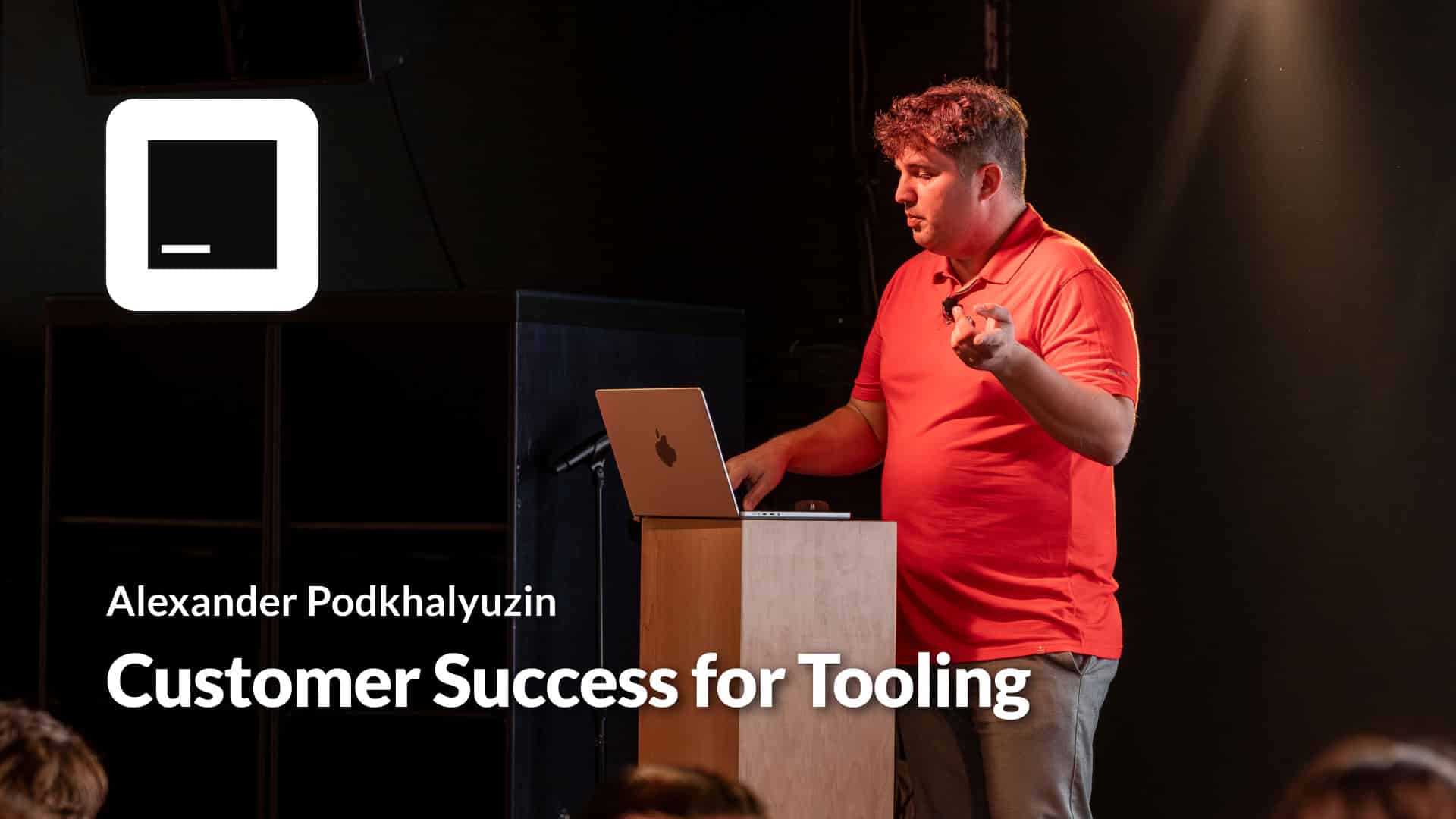
Customer Success for Tooling
Alexander at JetBrains highlights the importance of partnerships when it comes to customer success—he focuses on building trust and transparency and using surveys and data to make incremental improvements to their offerings. JetBrains and DPE both rely on partnerships for success, while emphasizing the key drivers of transparency, communication, and data-driven decision-making.
Watch the video 
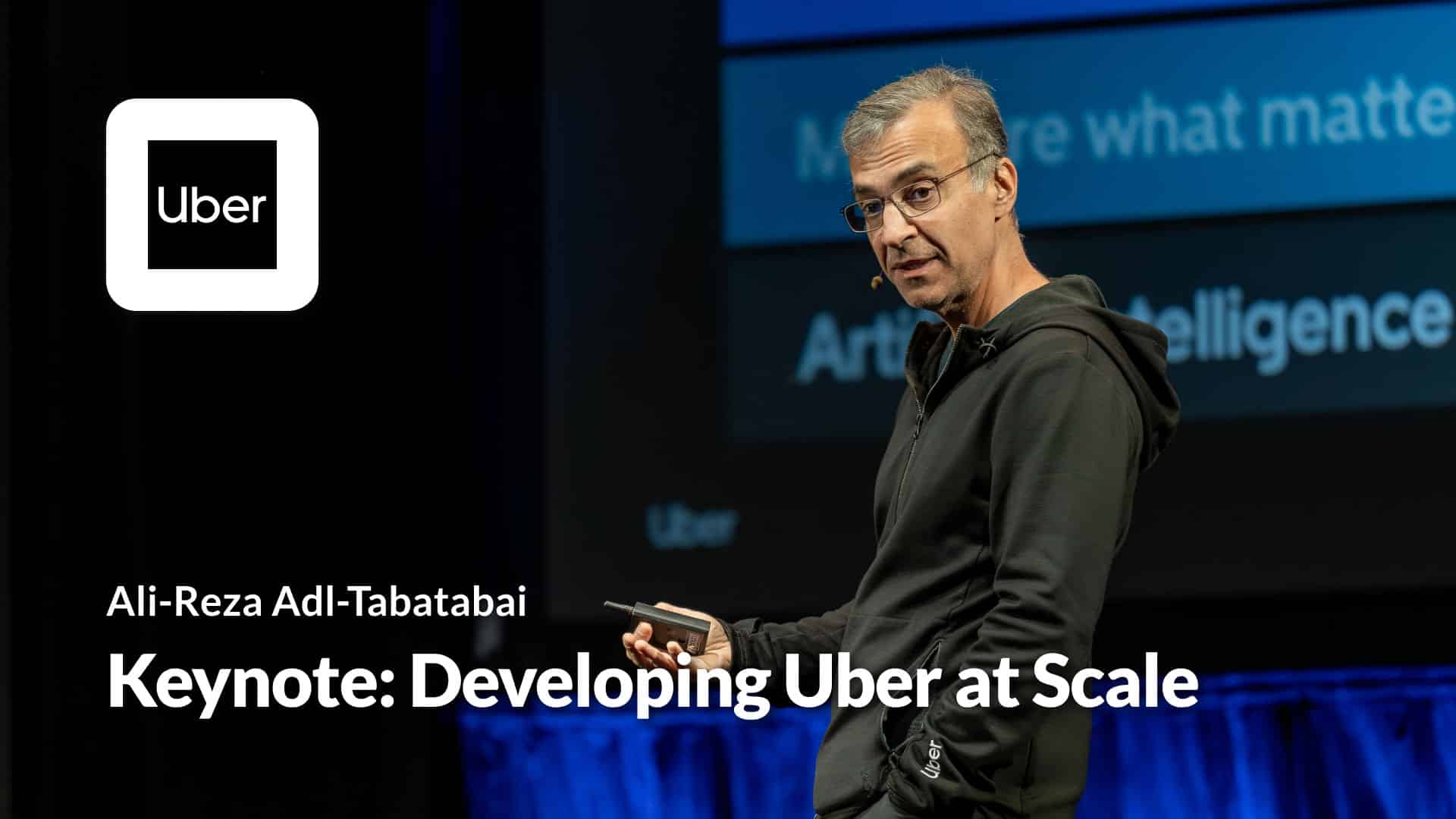
Developing at Uber Scale
Ali from Uber describes how their 200-person Developer Platform team drives efficiency across 100k+ monthly deployments while prioritizing developer satisfaction. Ali’s keynote stresses the significance of DPE tools—like performance acceleration technologies for faster feedback cycles and ML-driven automated testing for driver-rider interactions—showcasing its universal benefits, even for companies not at Uber’s scale.
Watch the video 
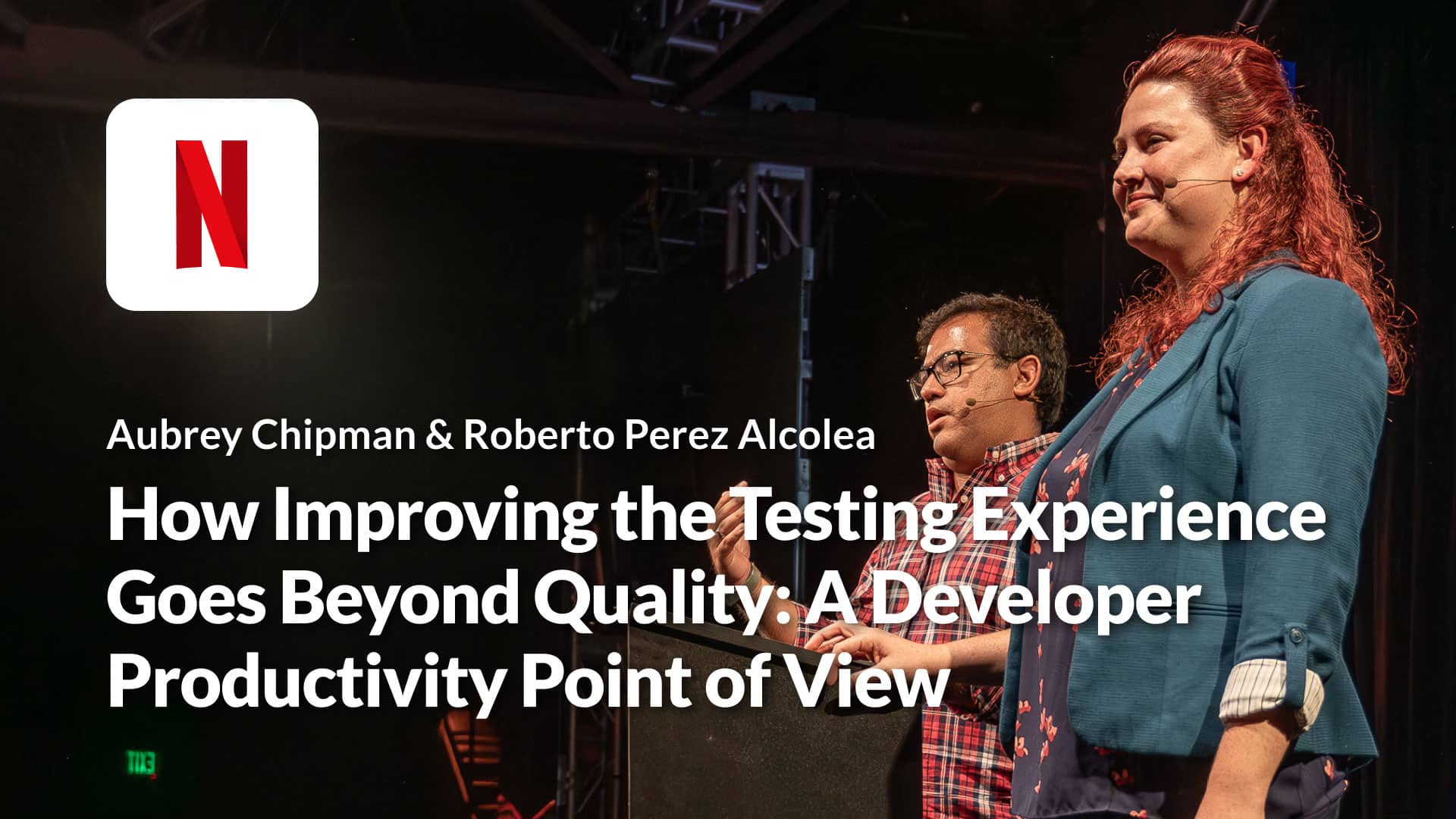
How Improving the Testing Experience Goes Beyond Quality: A Developer Productivity Point of View
If you’re interested in faster tests, flaky test detection/remediation, remote test execution, and predictive test selection, this talk is for you. Pro Tip: How they rolled out Develocity’s Predictive Test Selection AI/ML technology to save 107 days of test execution time in the first month is quite interesting.
Watch the video 
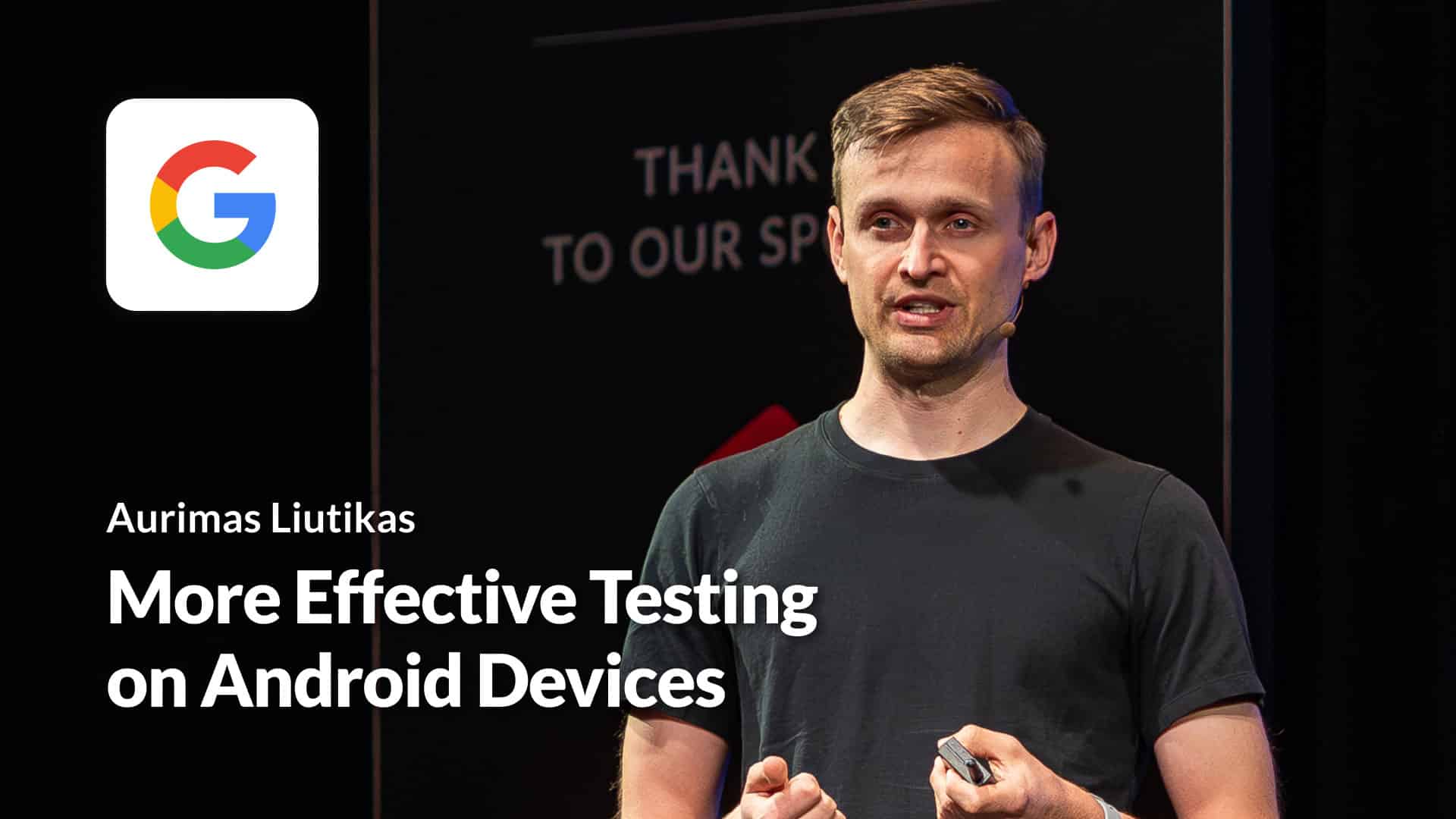
More Effective Testing on Android Devices
Aurimas shares his Android on-device testing tips, including what you should avoid to run more effective tests. He shares the AndroidX case study that covers to how to keep their continuously growing test suite fast.
Watch the video 
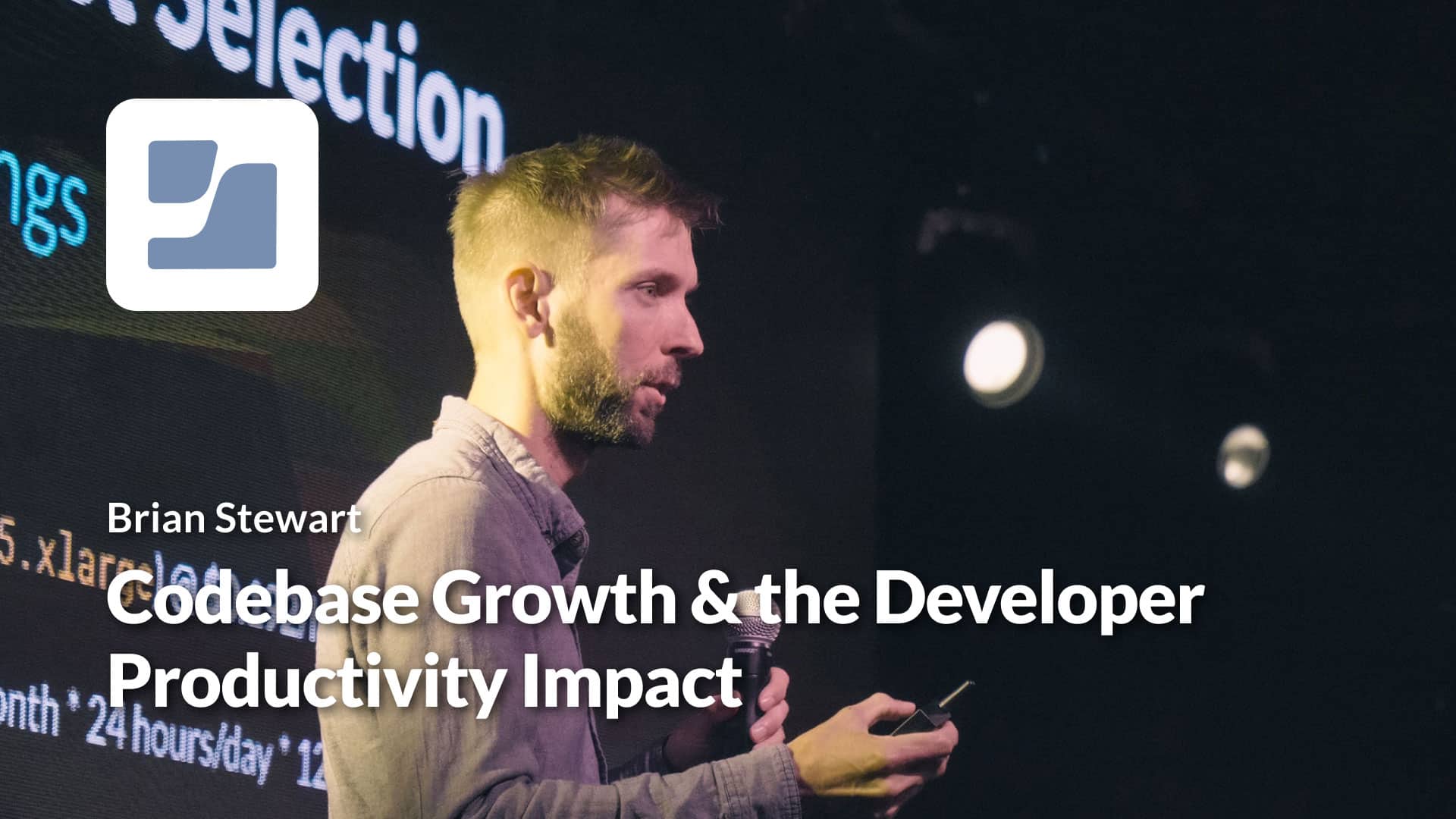
Codebase Growth and the Developer Productivity Impact
Brian from the Jamf DPE team shares how he measured the impact of codebase growth on build times and developer productivity. Brian also shares how Develocity’s Predictive Test Selection reduced unit test time by 36% and integration test time by 39%. If you’re interested in build/test performance acceleration, this talk is for you.
Watch the video 
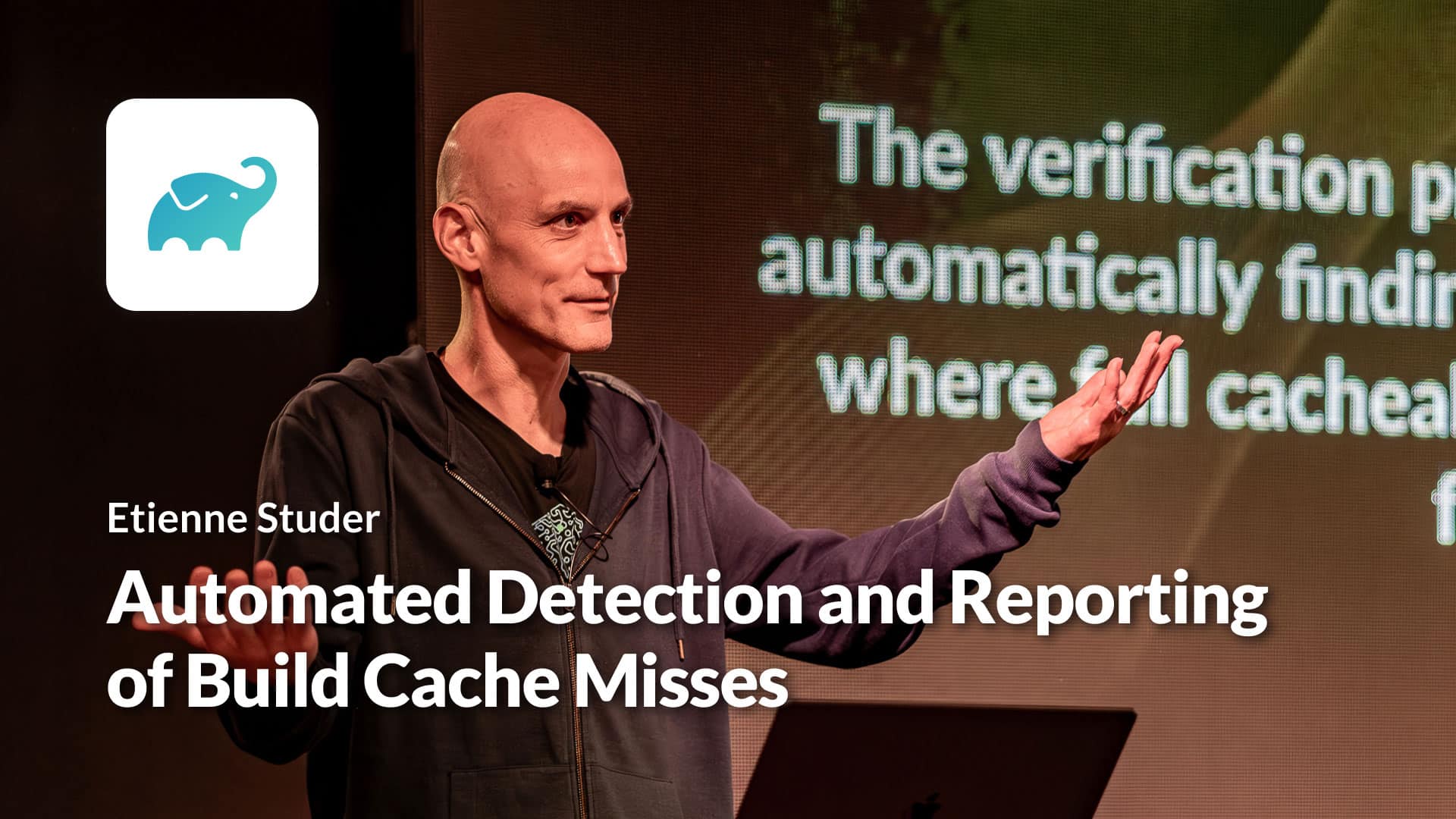
Automated Detection and Reporting of Build Cache Misses
Etienne from the Develocity (formerly Gradle Enterprise) engineering team shares how you can use the latest Develocity build/test observability feature—build validation scripts—to monitor build cache misses across many projects. You can identify which of your projects had build cache misses, the number of misses, and the amount of engineering time lost. He also explains how to generate a fast link to the Build Scan UI to investigate and fix problems.
Watch the video 
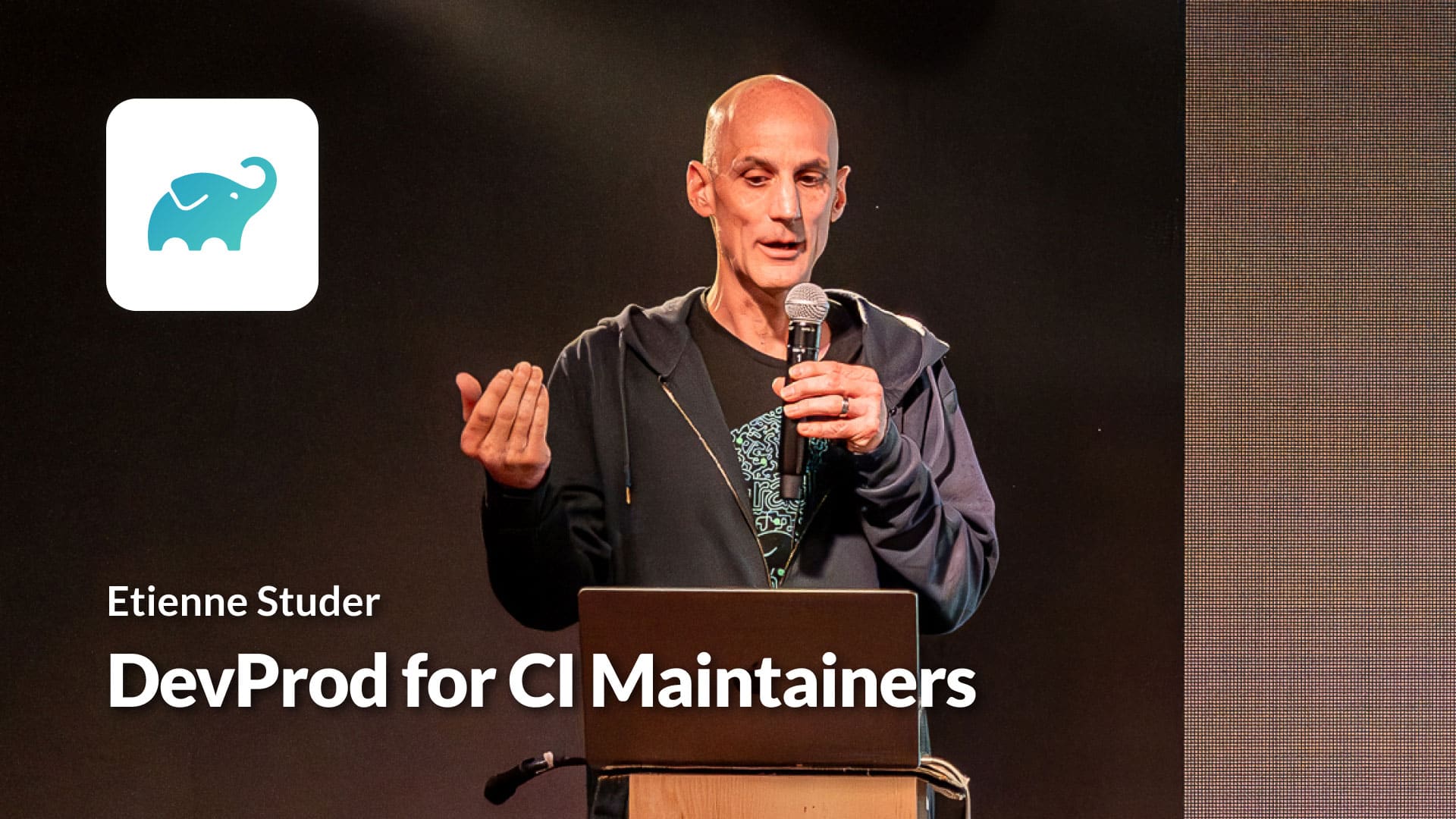
DevProd for CI Maintainers
Etienne from the Develocity (formerly Gradle Enterprise) engineering team shows how you can use Develocity to capture CI build/test data from many projects to identify productivity bottlenecks. He shares how to use the Develocity telemetry and API data to surface and prioritize DPE initiatives. Pro tip: If you’re interested in DPE build/test metrics, query and visualization with AWS Athena and Grafana is quite interesting.
Watch the video 
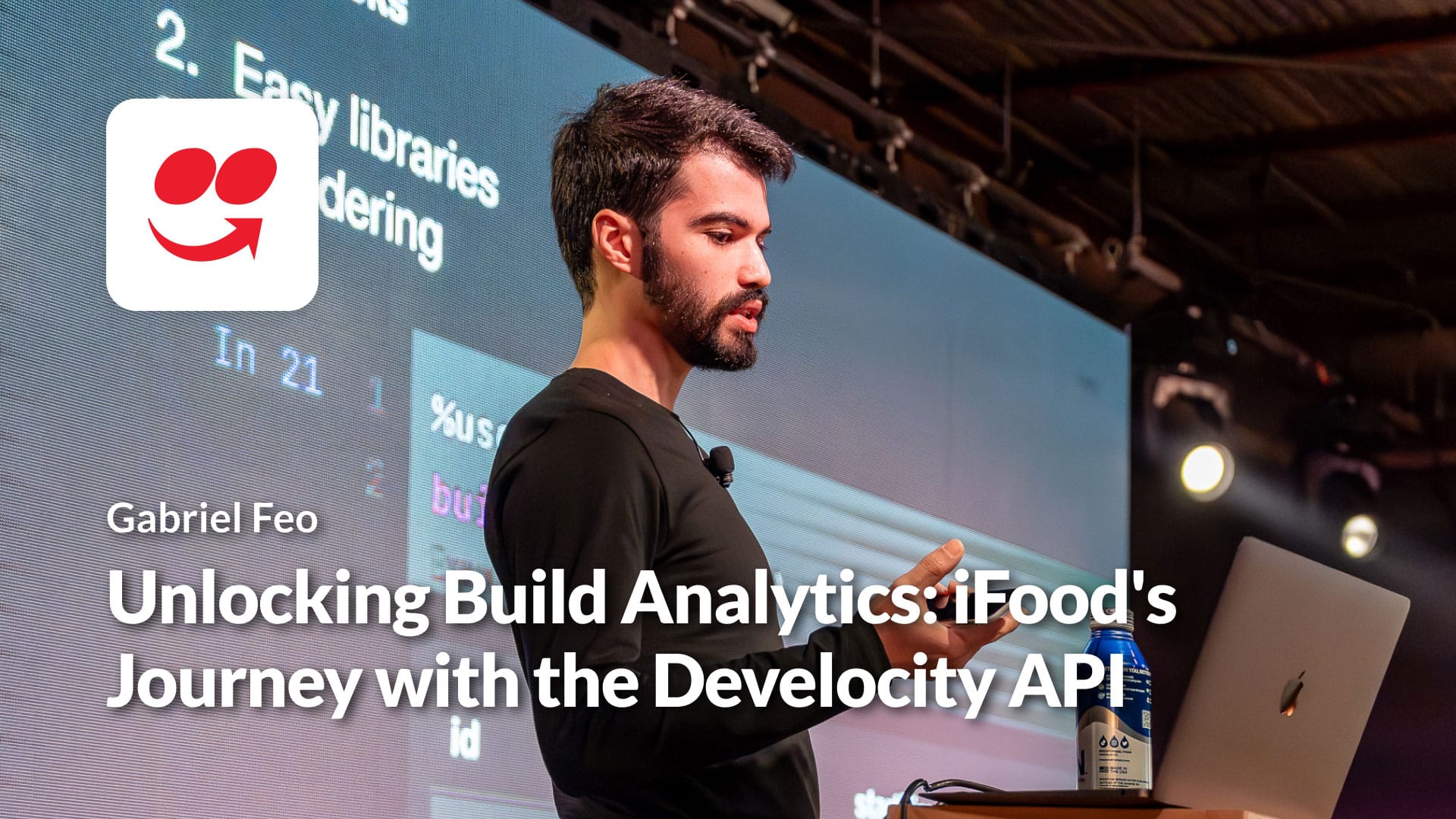
Unlocking Build Analytics: iFood’s Journey with the Gradle Enterprise API
Gabriel from iFood shares how they used the Develocity API to capture build/test metrics across their projects and builds. They used these metrics to create reports and dashboards to monitor flaky tests, and then used the insights to get aggregate reports around hard-to-find bottlenecks. How they use the Devolocity API for monitoring flaky tests and automating the creation of test tickets is pretty cool.
Watch the video 
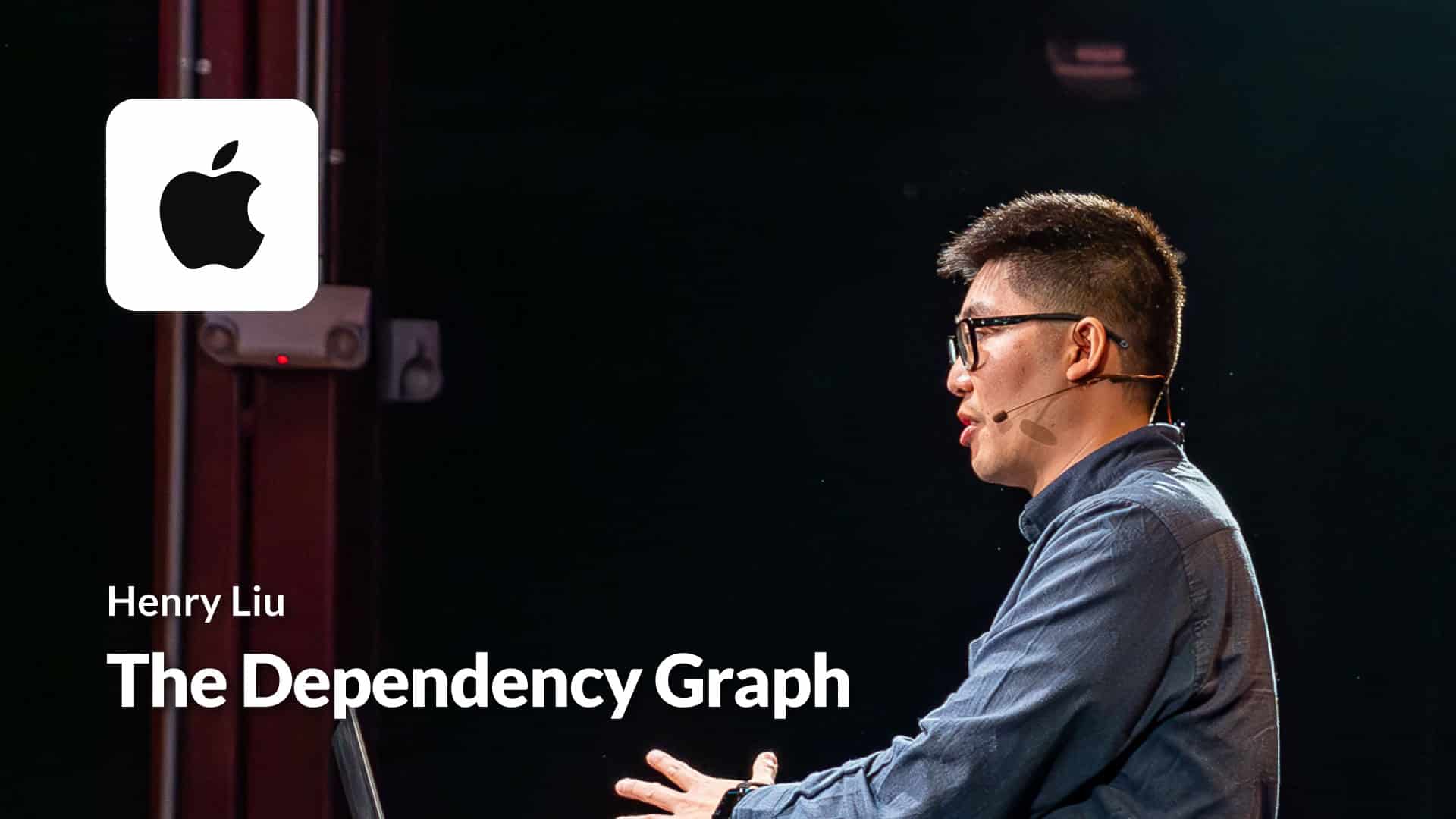
The Dependency Graph
Henry from the Apple Maps team shares how they solve dependency hell, at scale. If you’re interested in SBOM (software bill of materials), Dependency analysis/graphs, and DPE for microservices, this is the talk for you. Pro Tip: The automated dependency updates across many projects is especially interesting.
Watch the video 

Android CI at Scale
Learn more about the CI team behind one of the largest Android application teams on the planet. Inez shares Block’s techniques for UI test avoidance. This includes decompiling the apk/test apks and taking hash of those, and when they determine that they already tested those combinations, they skip the UI tests. This technique minimizes the set of CI shards that need to run and resulted in 50% of shards skipped.
Watch the video 
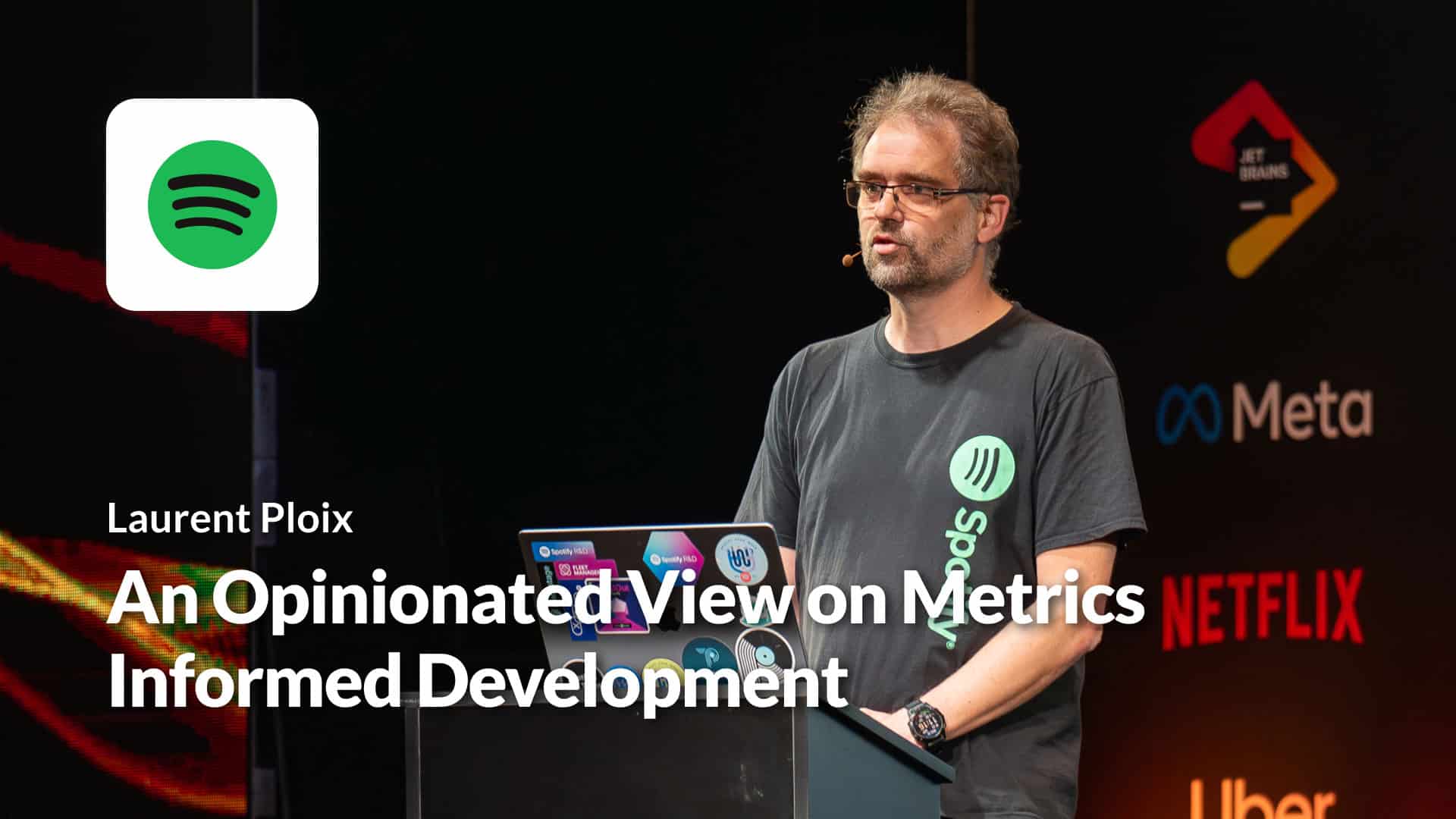
An Opinionated View on Metrics Informed Development
Laurent explores the challenge of aligning metrics between developers and executives. Leveraging self-reported developer productivity metrics, his team at Spotify distinguishes between leading metrics (short-term actions) and lagging metrics (long-term impact)—with the goal of connecting actions to long-term gains and avoiding “vanity” productivity measures.
Watch the video 

Build Health and Velocity Score: How Pinterest Tracks the State of Builds
Manuel shares how the Pinterest mobile team tracks local/CI build times, CI up time, and other build metrics to measure the state of builds. They label builds with a number and letter grade to determine build health.
Watch the video 

Android CI at Scale
Learn more about the CI team behind one of the largest Android application teams on the planet. Inez shares Block’s techniques for UI test avoidance. This includes decompiling the apk/test apks and taking hash of those, and when they determine that they already tested those combinations, they skip the UI tests. This technique minimizes the set of CI shards that need to run and resulted in 50% of shards skipped.
Watch the video 

How Improving the Testing Experience Goes Beyond Quality: A Developer Productivity Point of View
If you’re interested in faster tests, flaky test detection/remediation, remote test execution, and predictive test selection, this talk is for you. Pro Tip: How they rolled out Develocity’s Predictive Test Selection AI/ML technology to save 107 days of test execution time in the first month is quite interesting.
Watch the video 
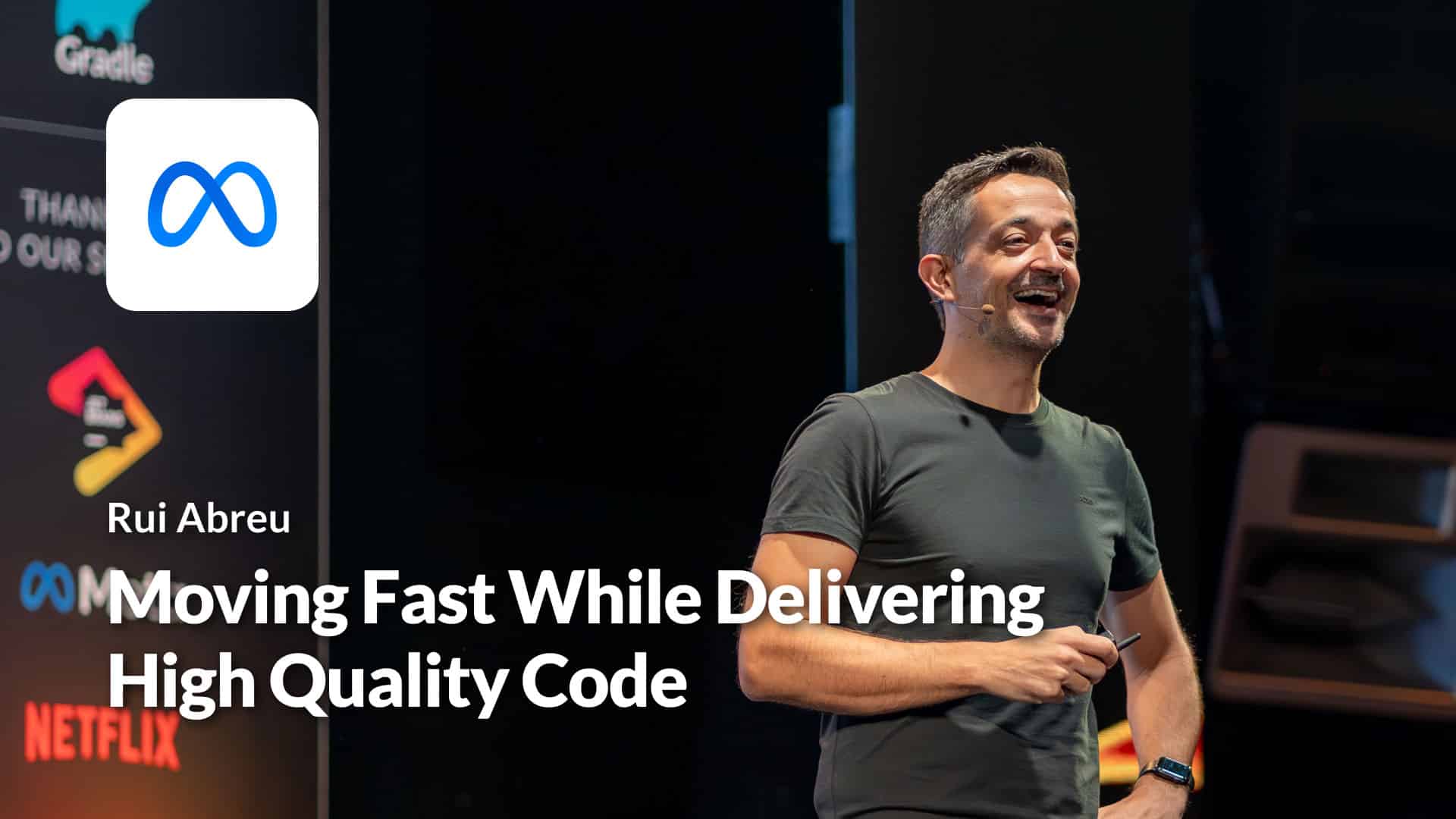
Moving Fast While Delivering High Quality Code
Rui from Meta navigates the complexities of measuring developer productivity. He critiques DORA and SPACE metrics, suggesting a three-pronged approach: Velocity, Reliability, and Code Readability. He explores academic research on test productivity, dead code removal, and defining code readability.
Watch the video 
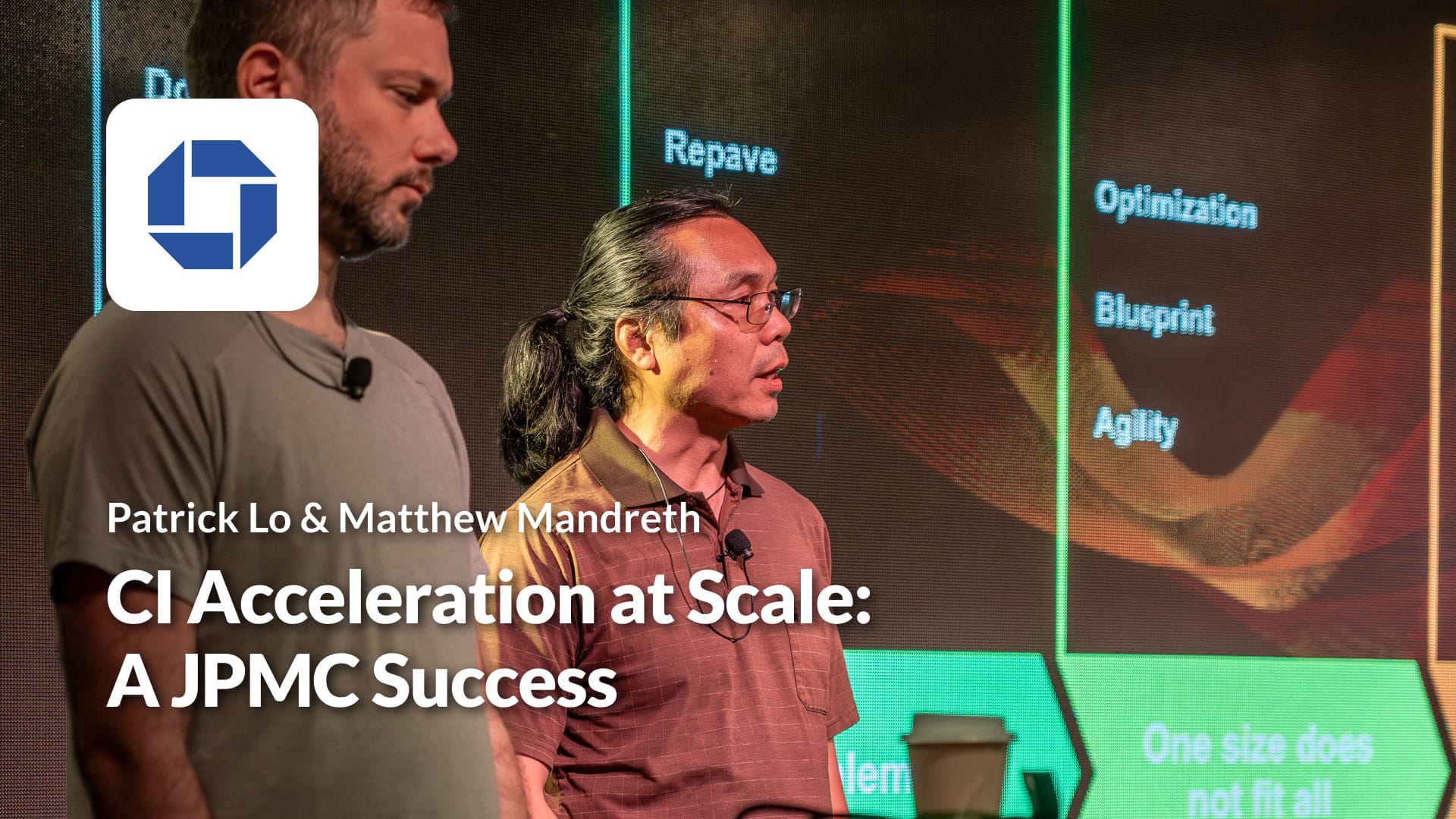
CI Acceleration at Scale – A JPMC Success Story
The JPMC toolchain team reveals the DPE challenges of supporting 40k+ developers across 100k+ repos. They share how they measure CI quality of service in terms of predictability, reliability, and developer experience, and how they implemented a developer experience platform.
Watch the video 
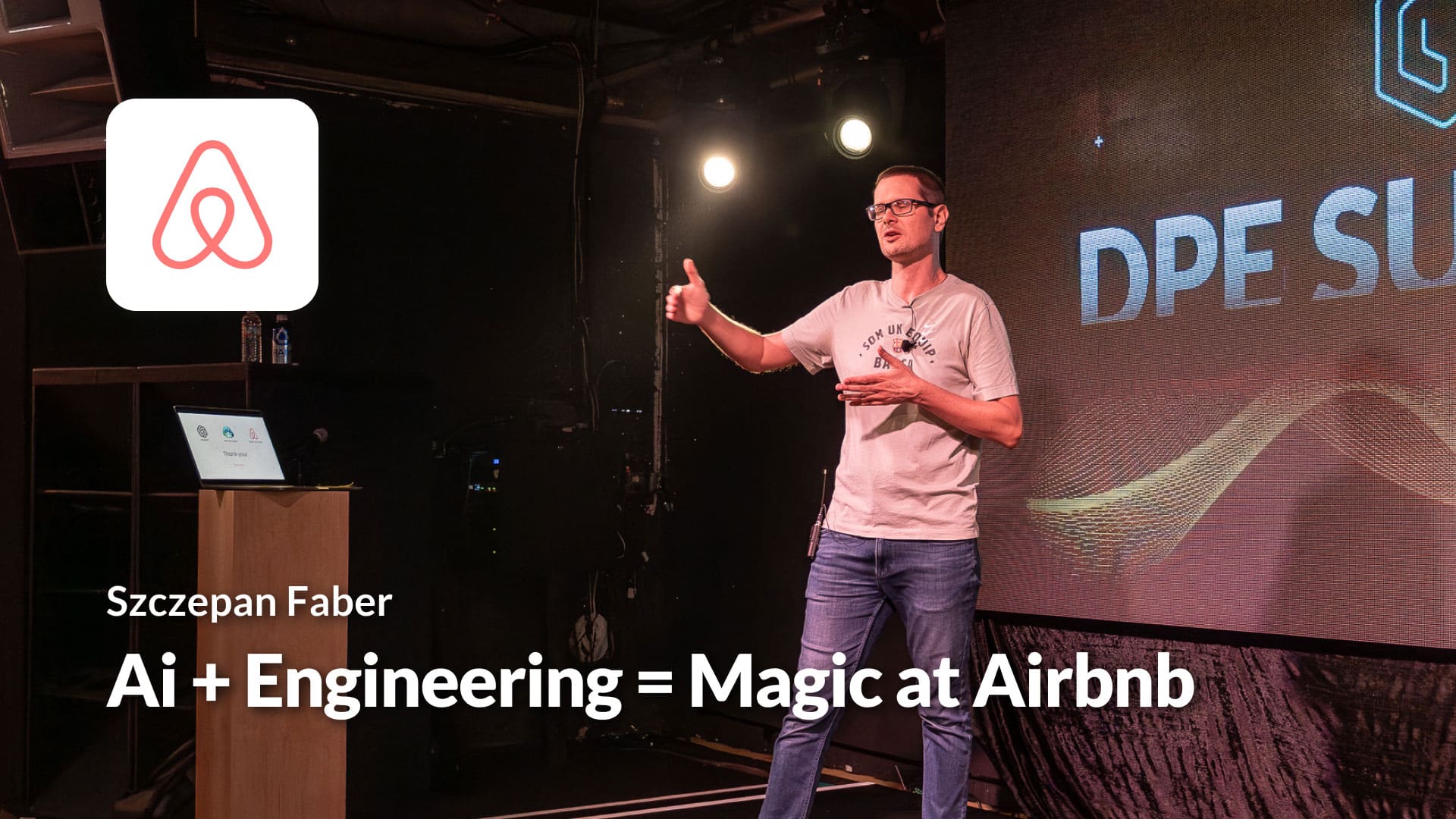
AI + Engineering = Magic at Airbnb
Szczepan at Airbnb asks: Does AI actually make our developers more productive? His team set out to test this theory by trying different developer productivity use-cases with AI tools like ChatGPT and GitHub Copilot. Seeing some early successes, they created their own custom AI model called One Chat, specifically designed to help Airbnb developers be more productive.
Watch the video 
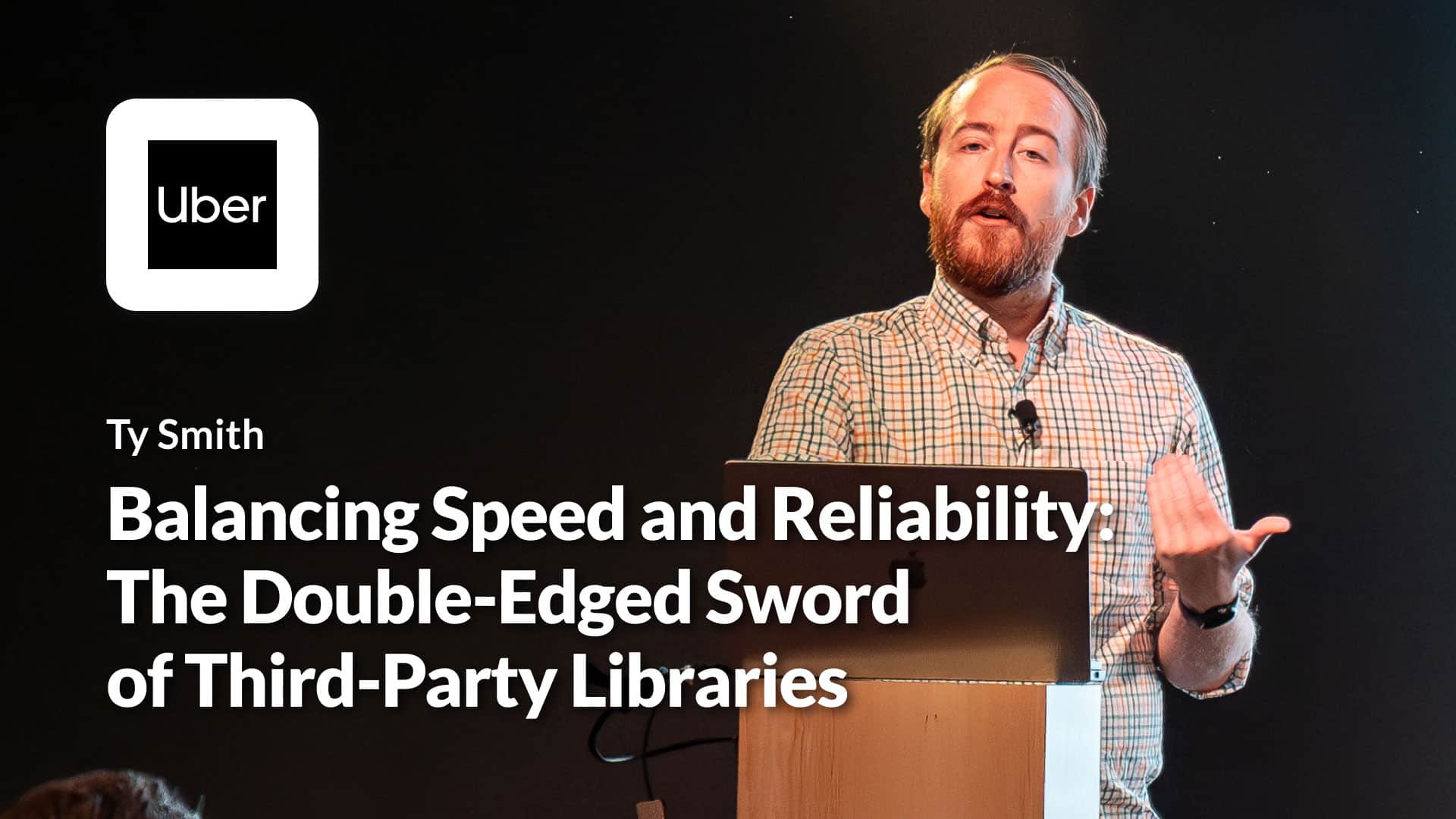
Balancing Speed and Reliability: The Double-Edged Sword of Third-Party Libraries
Ty at Uber shares real-life stories that most developers can relate to, as well as lesson learned the hard way: a crash in third-party code means a crash in your app. Ty shows how his team balances risk and reward with actual code examples that Uber uses to prevent bugs, dependency conflicts, and other issues before they can exact a real toll.
Watch the video 
Tuesday, Sept 21
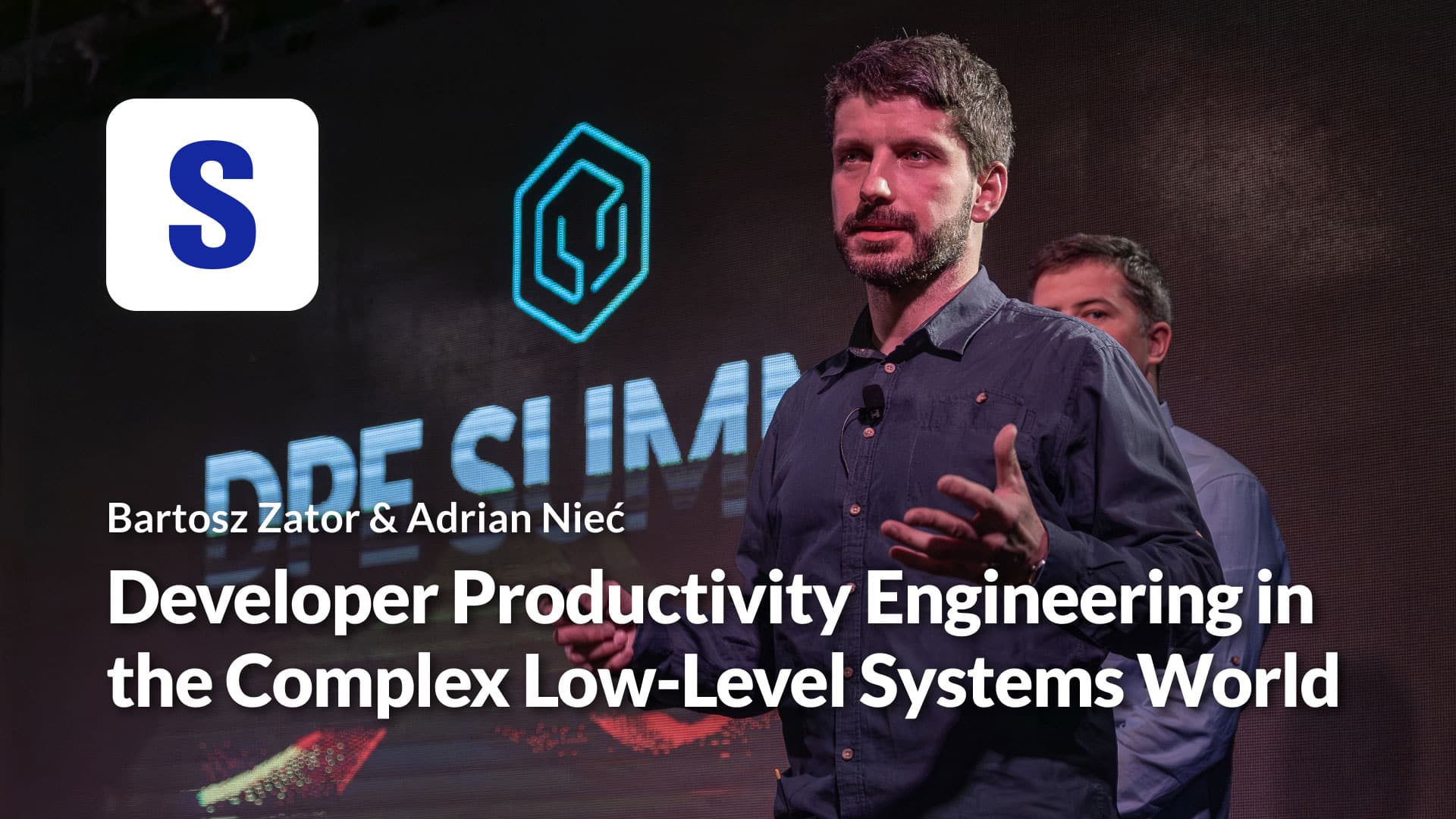
Developer Productivity Engineering in the Complex Low-Level Systems World
For Adrian and Bartosz at Samsung, software running on embedded systems—powering mobile phones, cars, and IoT devices—presents complex needs that require a specialized approach to DPE. In this talk, learn why Samsung created Code Aware Services (CAS) to bring forward data about builds and source code to further refine their developer productivity metrics and initiatives.
Watch the video 
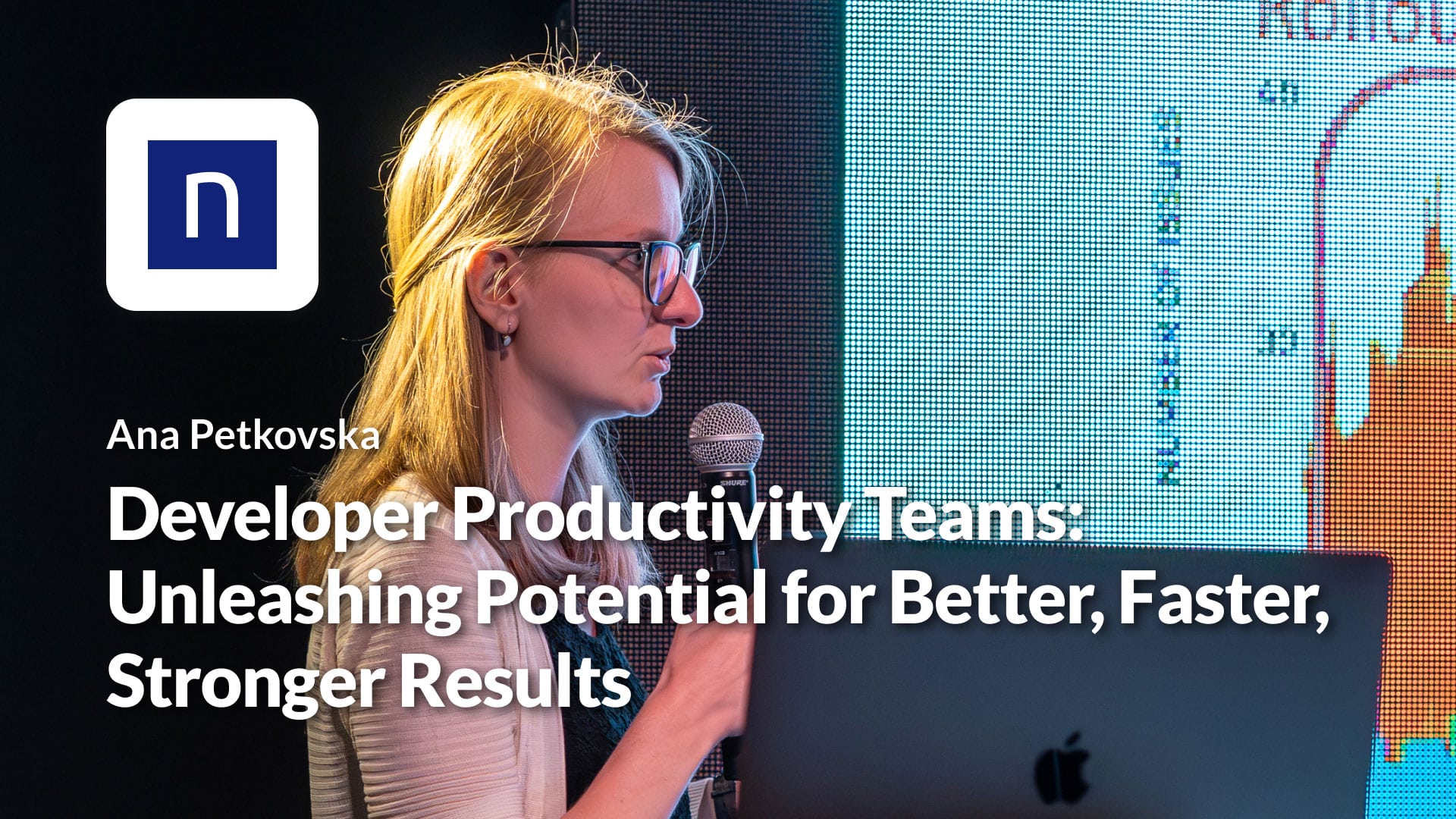
Developer Productivity Teams: Unleashing Potential for Better, Faster, Stronger Results
Ana at Nexthink describes their dedicated developer productivity organization which prioritizes developer feedback based on regular surveys that offer data-driven insights. By investing in boosting engineers’ satisfaction and productivity, they’ve expedited feedback cycles and created an easier onboarding experience via internal self-service platforms.
Watch the video 
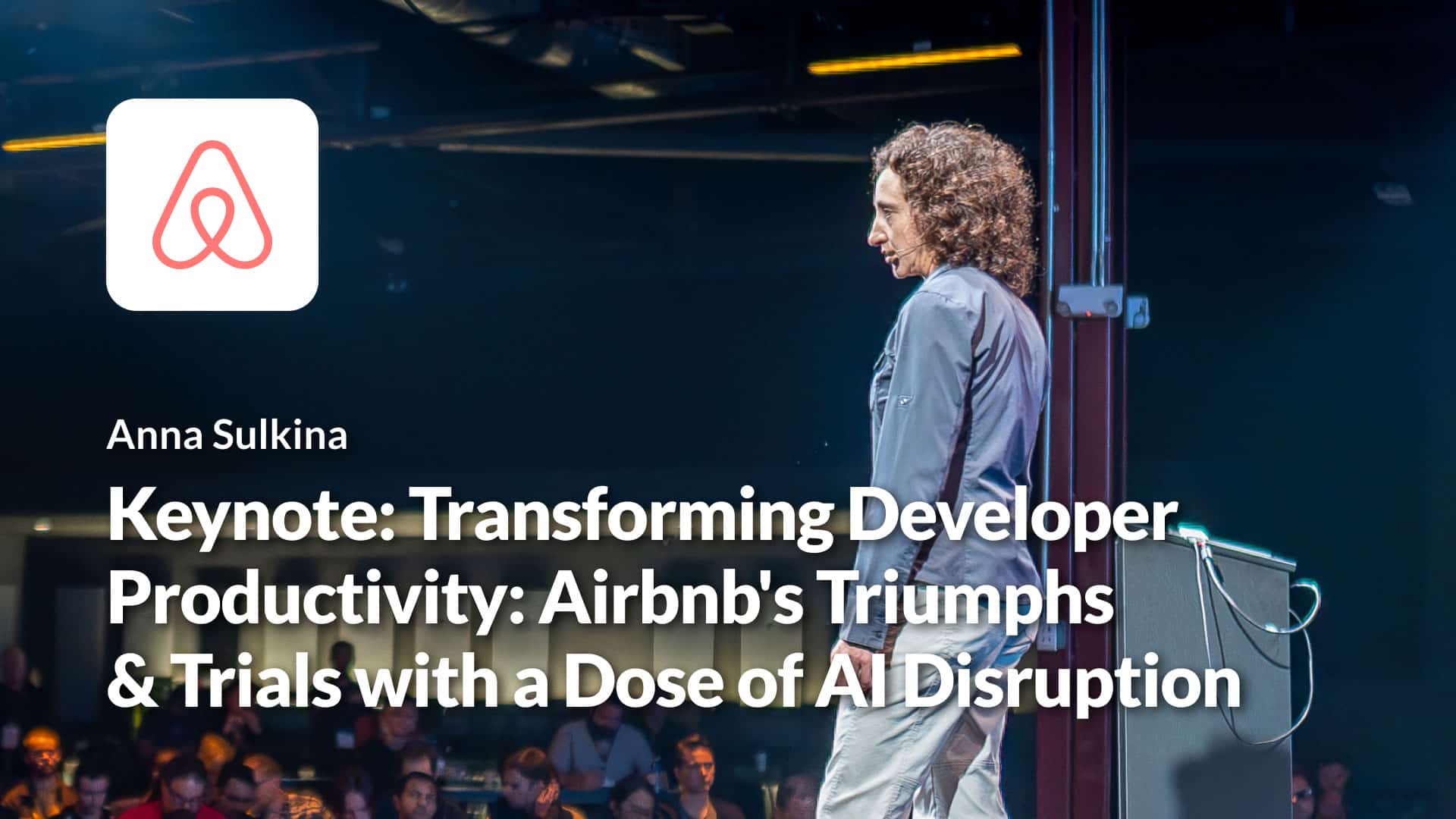
Transforming Developer Productivity: Airbnb’s Triumphs and Trials with a Dose of AI Disruption
Anna’s keynote unveils Airbnb’s DPE best practices: internal surveys for gauging developer productivity, DevX metrics for tracking progress, and Airdev—an internal platform for reducing cognitive load on developers that helps tackle issues like slow feedback loops and flaky tests.
Watch the video 
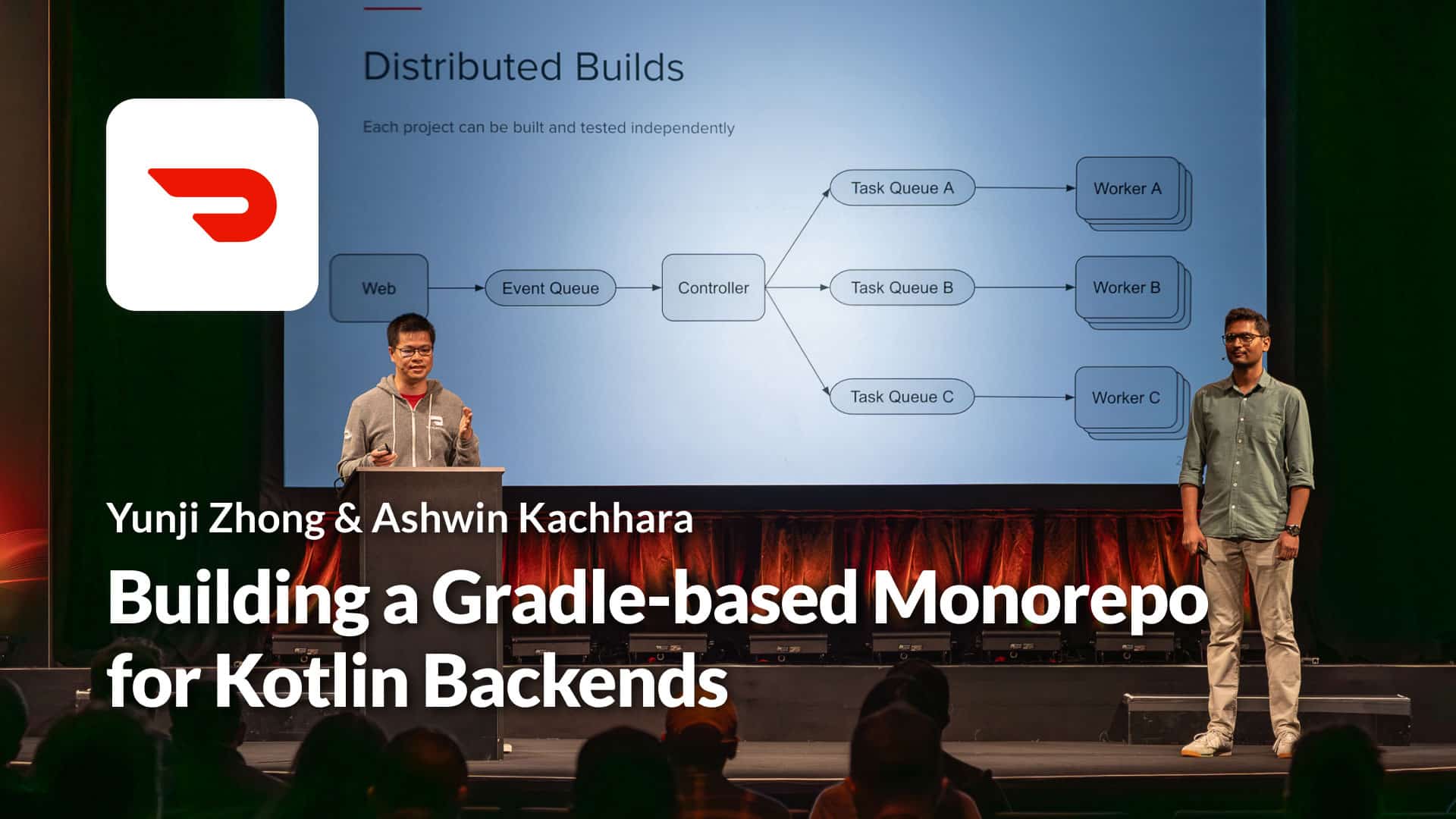
Building a Gradle-based Monorepo for Kotlin Backends
The Doordash team share their experiences exploring Gradle vs Bazel for building a mono repo. They share the challenges they faced and how certain Gradle Build Tool features helped solve them. They discuss custom plugins, composite builds, and version catalogs. If you’re working on builds/tests in large repos, this talk is for you.
Watch the video 
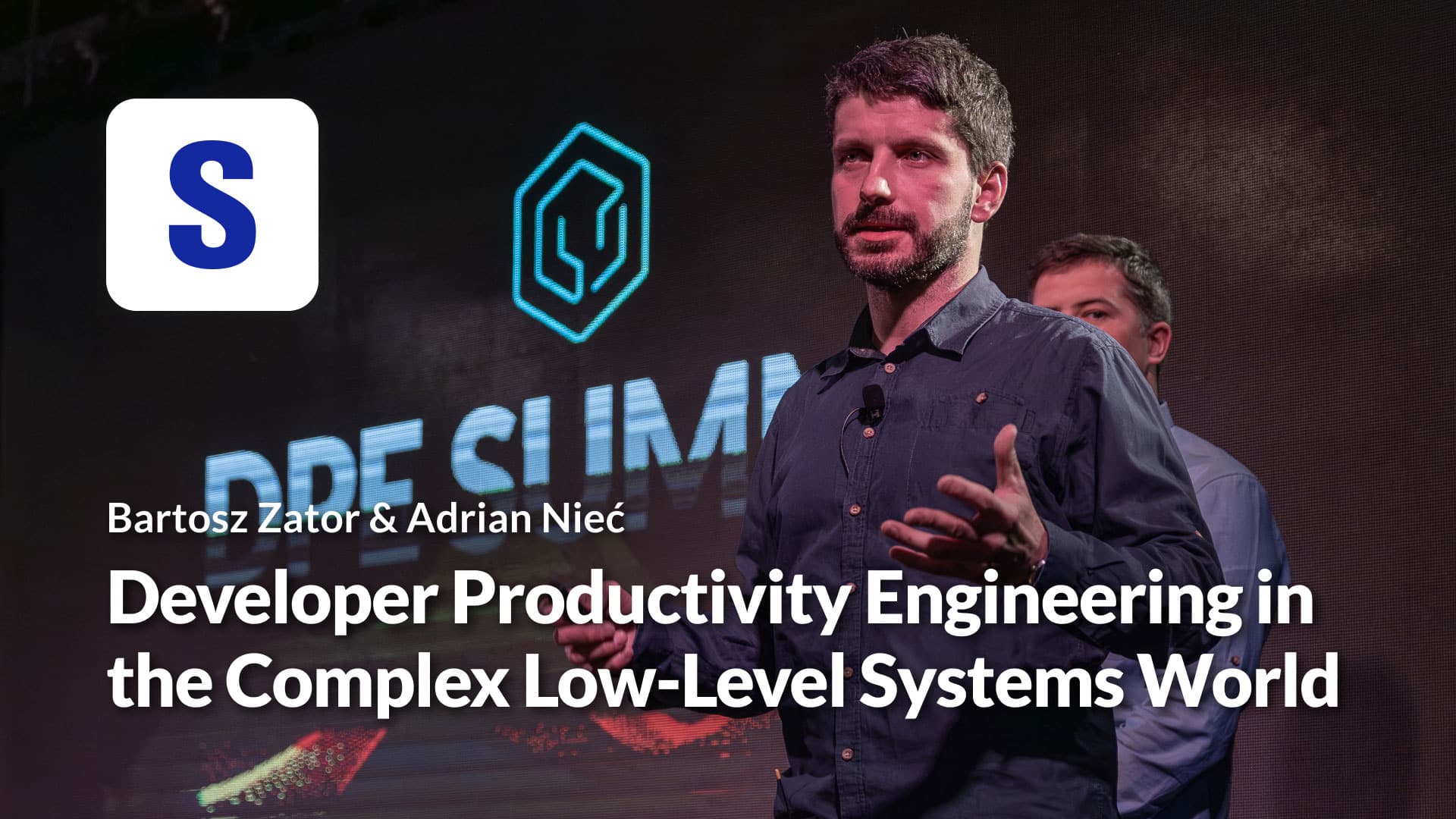
Developer Productivity Engineering in the Complex Low-Level Systems World
For Adrian and Bartosz at Samsung, software running on embedded systems—powering mobile phones, cars, and IoT devices—present complex needs that require a specialized approach to DPE. In this talk, learn why Samsung created Code Aware Services (CAS) to bring forward data about builds and source code to further refine their developer productivity metrics and initiatives.
Watch the video 
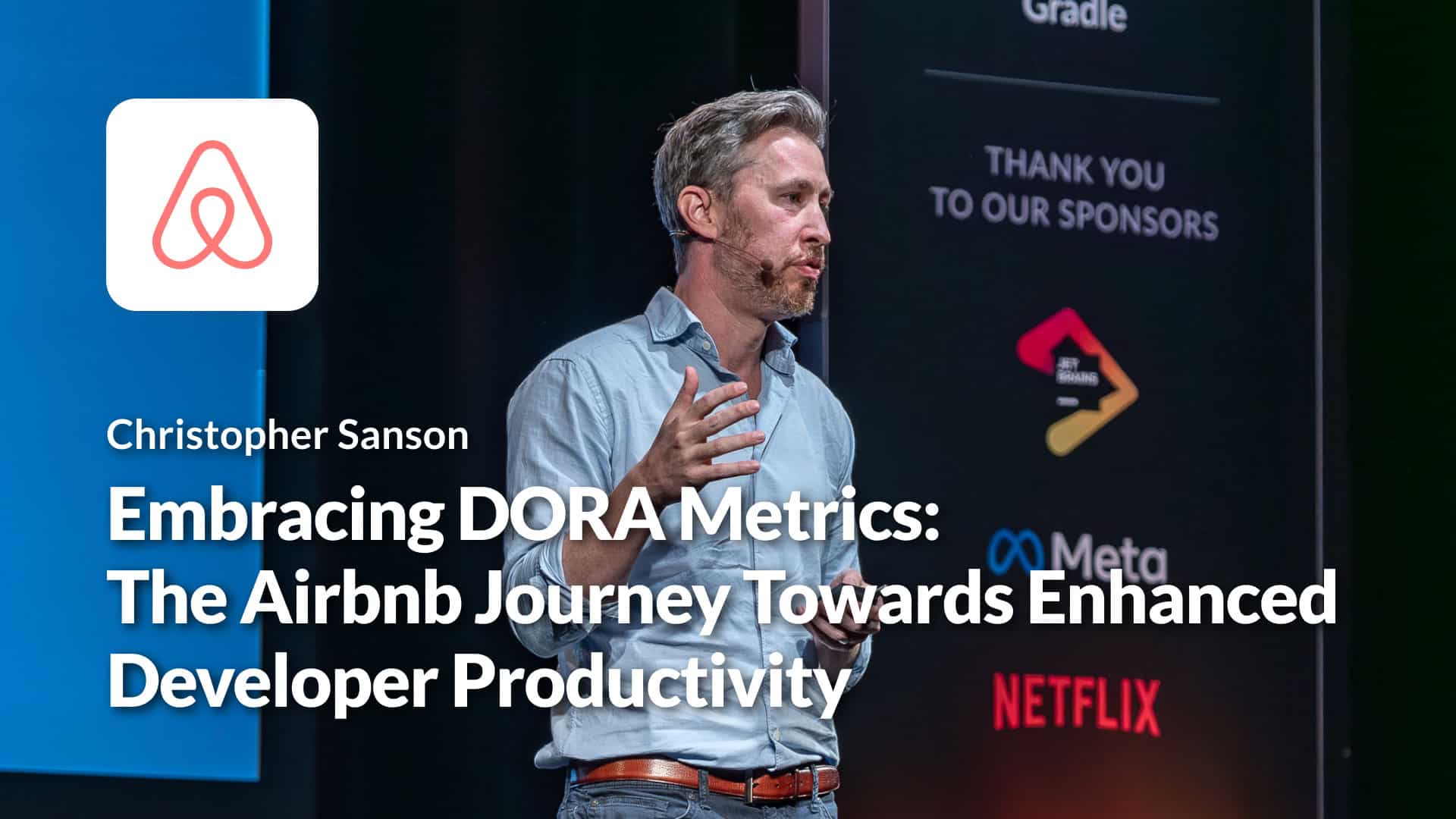
Embracing DORA Metrics: The Airbnb Journey Towards Enhanced Developer Productivity
Christopher at Airbnb describes his experience with DORA metrics and identifies some DORA do’s and don’ts. For example, DORA is useful for developing a common language and starting conversations about developer productivity; however, it’s not ideal for gauging the success of specific projects. In that context, looking at build wait times, test pass rate, and work environment factors can be more meaningful.
Watch the video 
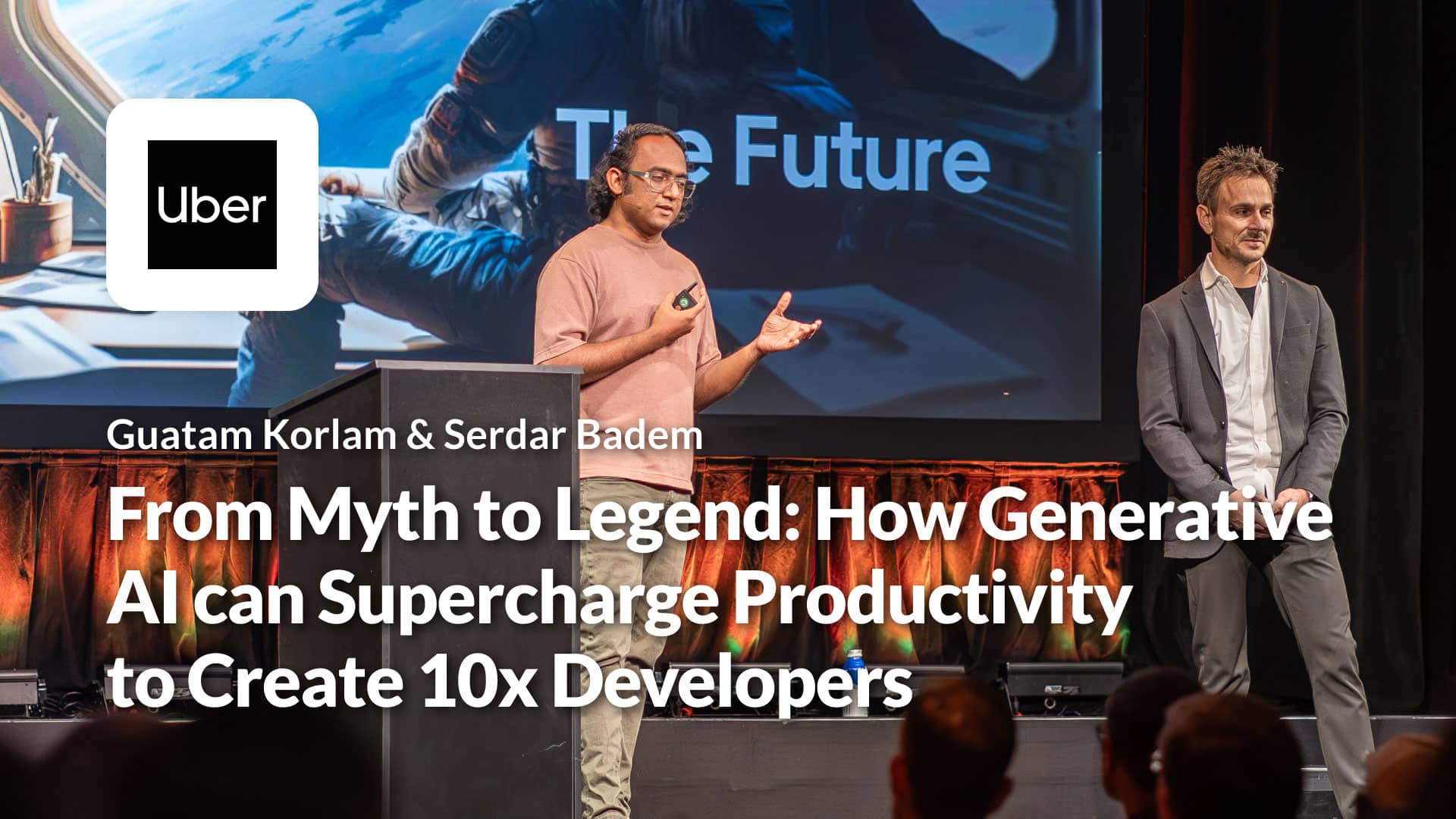
From Myth to Legend: How Generative AI Can Supercharge Productivity to Create 10x Developers
Gautam and Serdar at Uber explore whether Generative AI can match the productivity of a “10x developer”. They discuss results using Generative AI for tasks like refactoring, maintaining tests, incident management, and documentation enhancement. Their analysis reveals that while Co-Pilot and other tools make developers feel more productive, they produce only an average of 1-2 lines of usable code.
Watch the video 
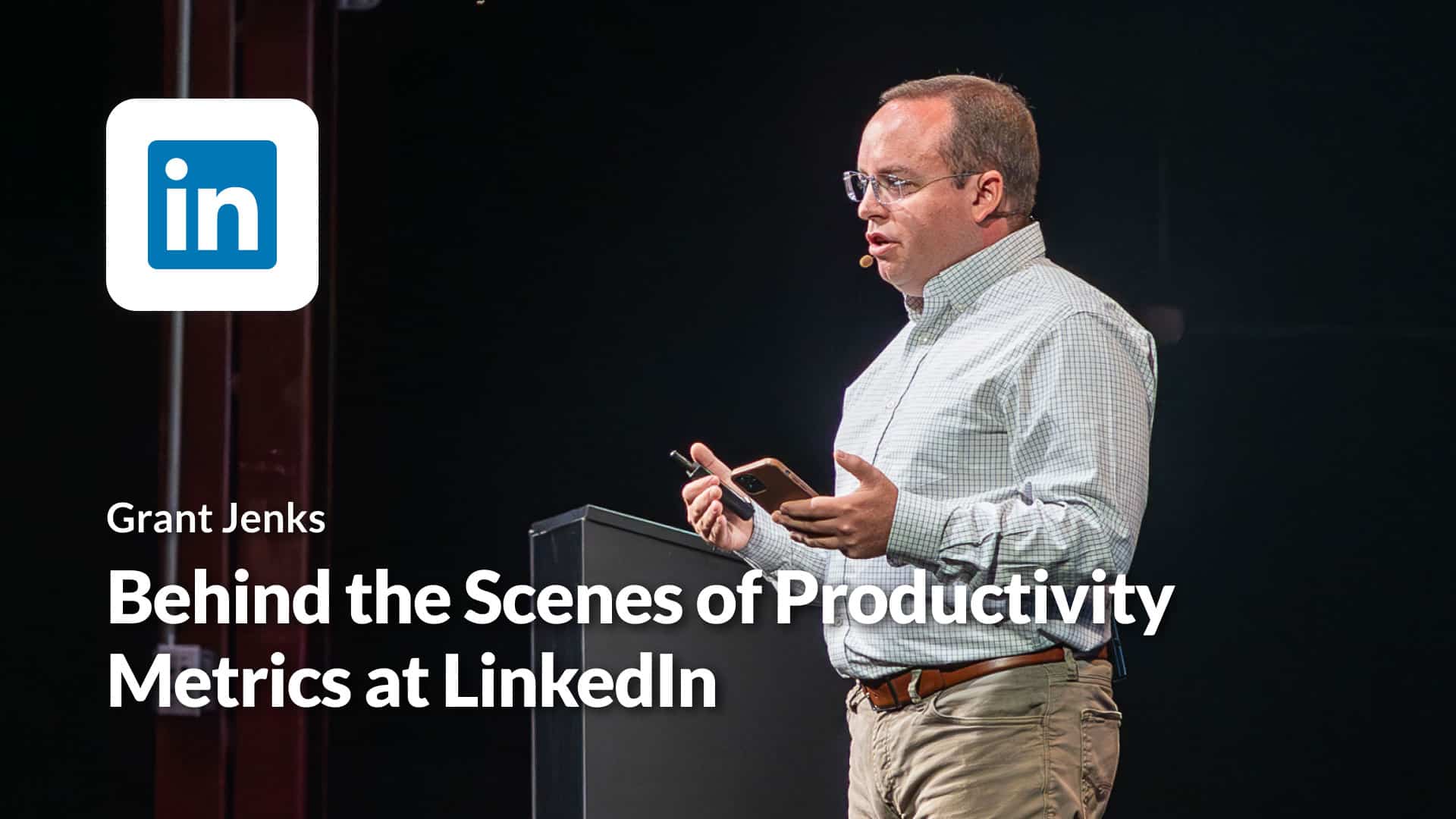
Behind the Scenes of Productivity Metrics at LinkedIn
Grant from the LinkedIn developer insights team shares how they capture productivity engineering metrics from teams/products/projects at LinkedIn. Grant shares how they collect, aggregate, analyze, and visualize the metrics for engineering leaders and productivity champions. Grant also surfaces examples of impactful metrics, such as the median duration that PR authors wait for feedback in code reviews.
Watch the video 
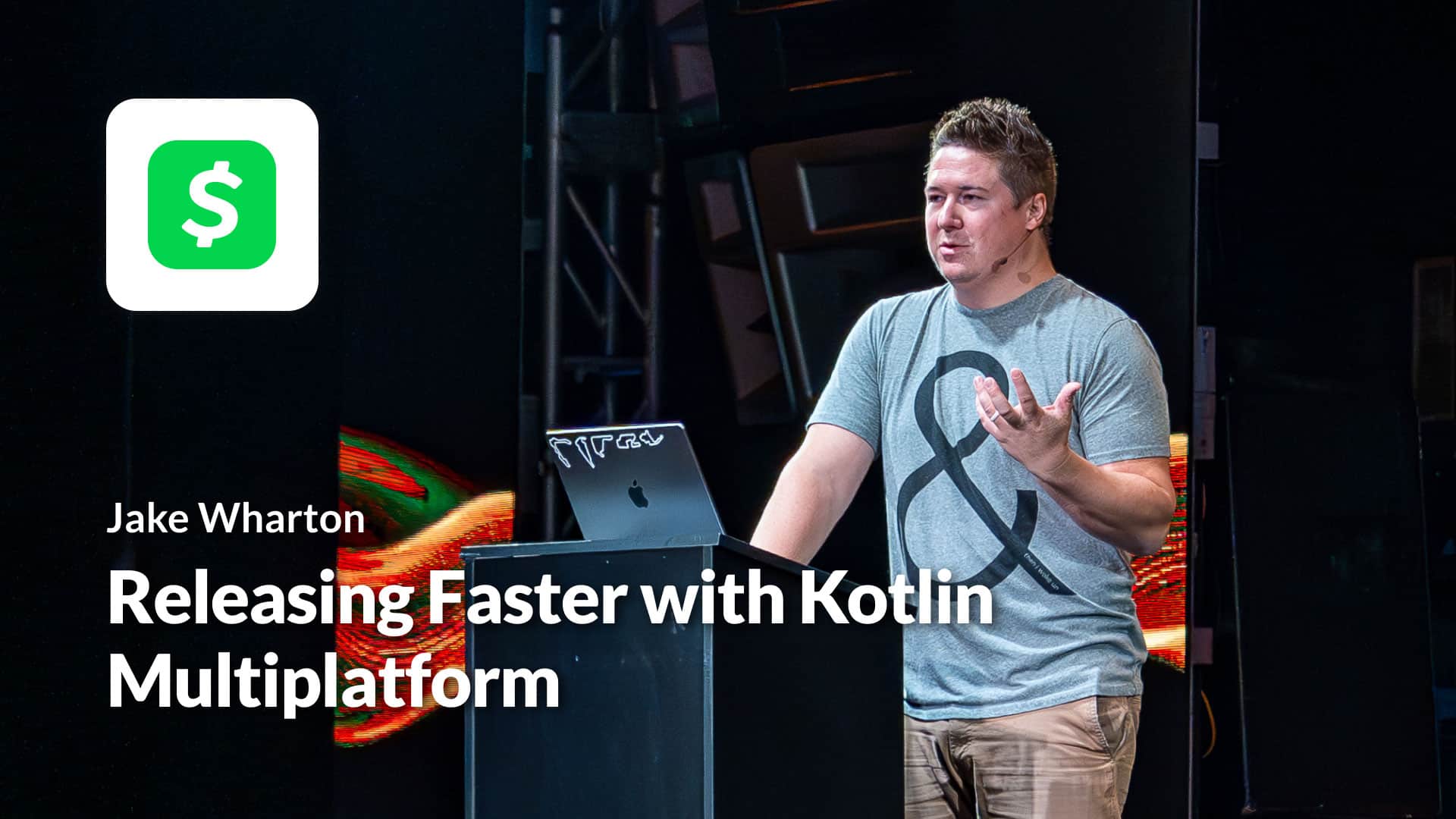
Releasing faster with Kotlin Multiplatform
Jake shares how previously the Cash App Android, iOS, and web apps were all developed natively, resulting in two-week release trains for mobile apps with 1-2 week rollout periods. By using Kotlin Multiplatform, they were able to substantially improve those deployment times to get their apps released faster.
Watch the video 
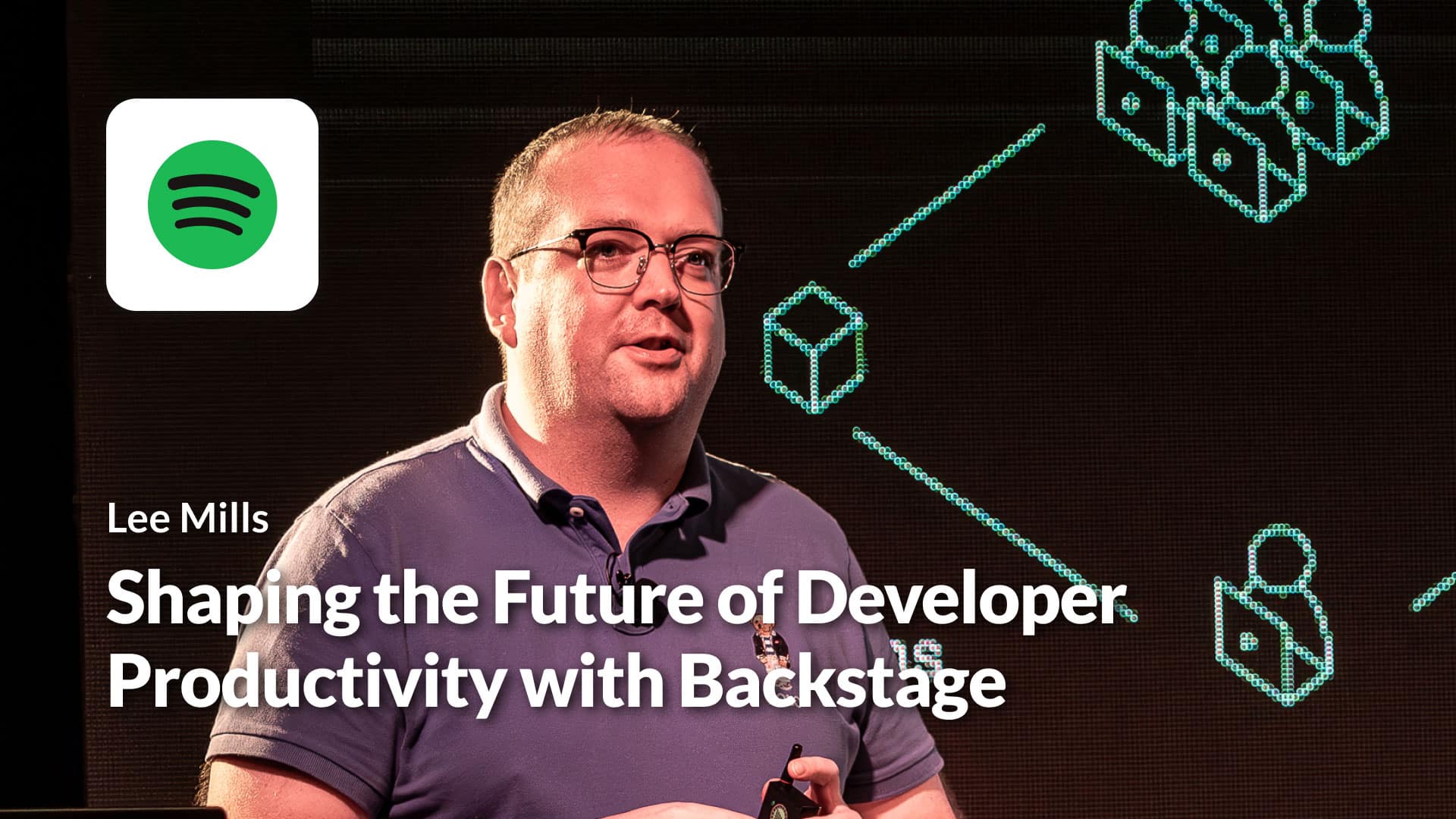
Shaping the Future of Developer Productivity with Backstage
Lee highlights Spotify’s dedication to DPE through their investment in Backstage, an internal developer portal that they later donated to the CNCF. Lee explains how Backstage—now supporting over 4 million external developers—aligns directly with a key DPE goal: to accelerate developer productivity by eliminating distractions and delays.
Watch the video 
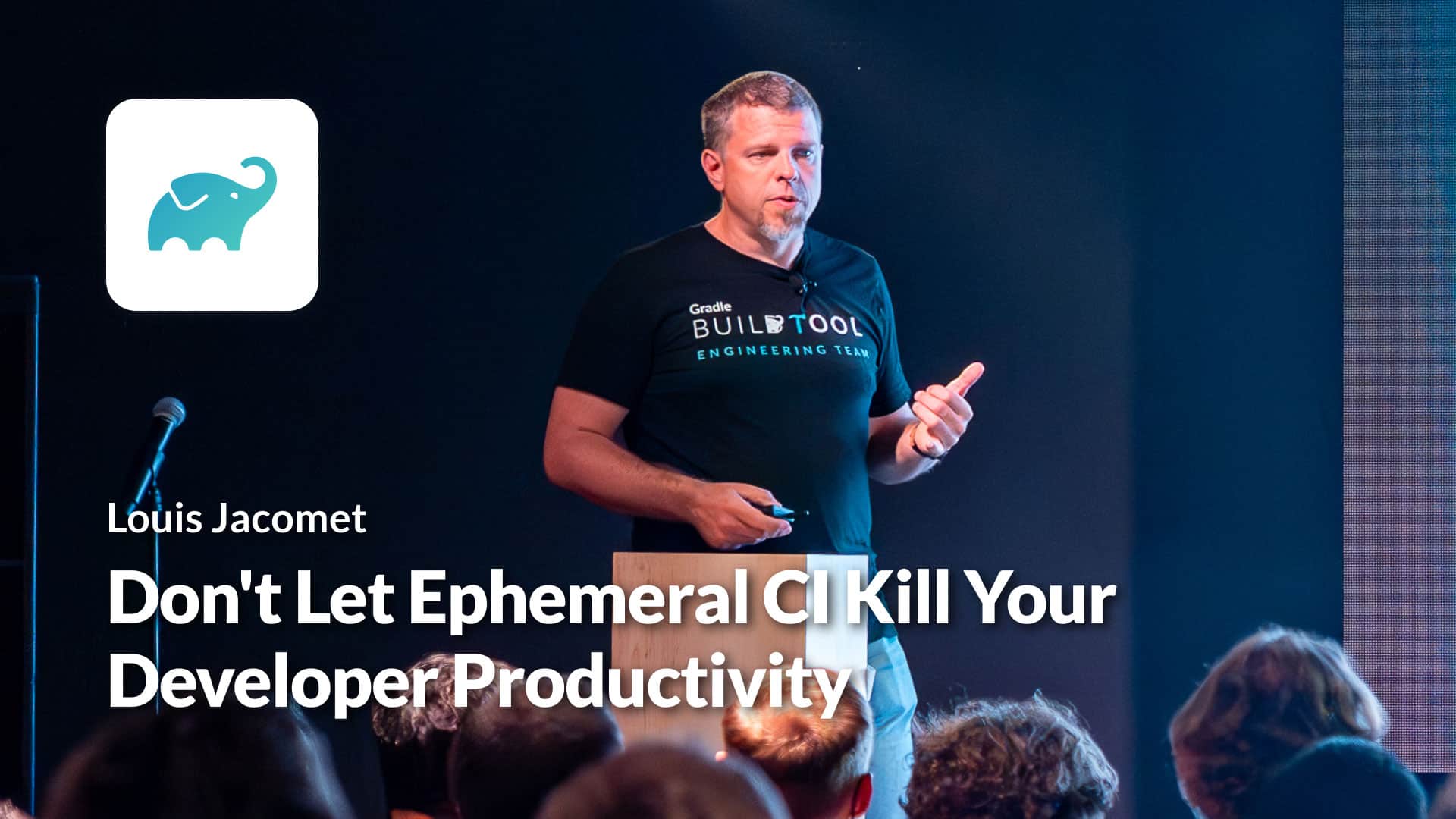
Don’t Let Ephemeral CI Kill Your Developer Productivity
Louis dives into how the standard performance optimizations that enhance developer productivity with Gradle Build Tool can be hindered in a stateless, ephemeral CI environment. He then shares which performance features make sense in these environments and walks through how to optimize Gradle Build Tool for various use cases.
Watch the video 
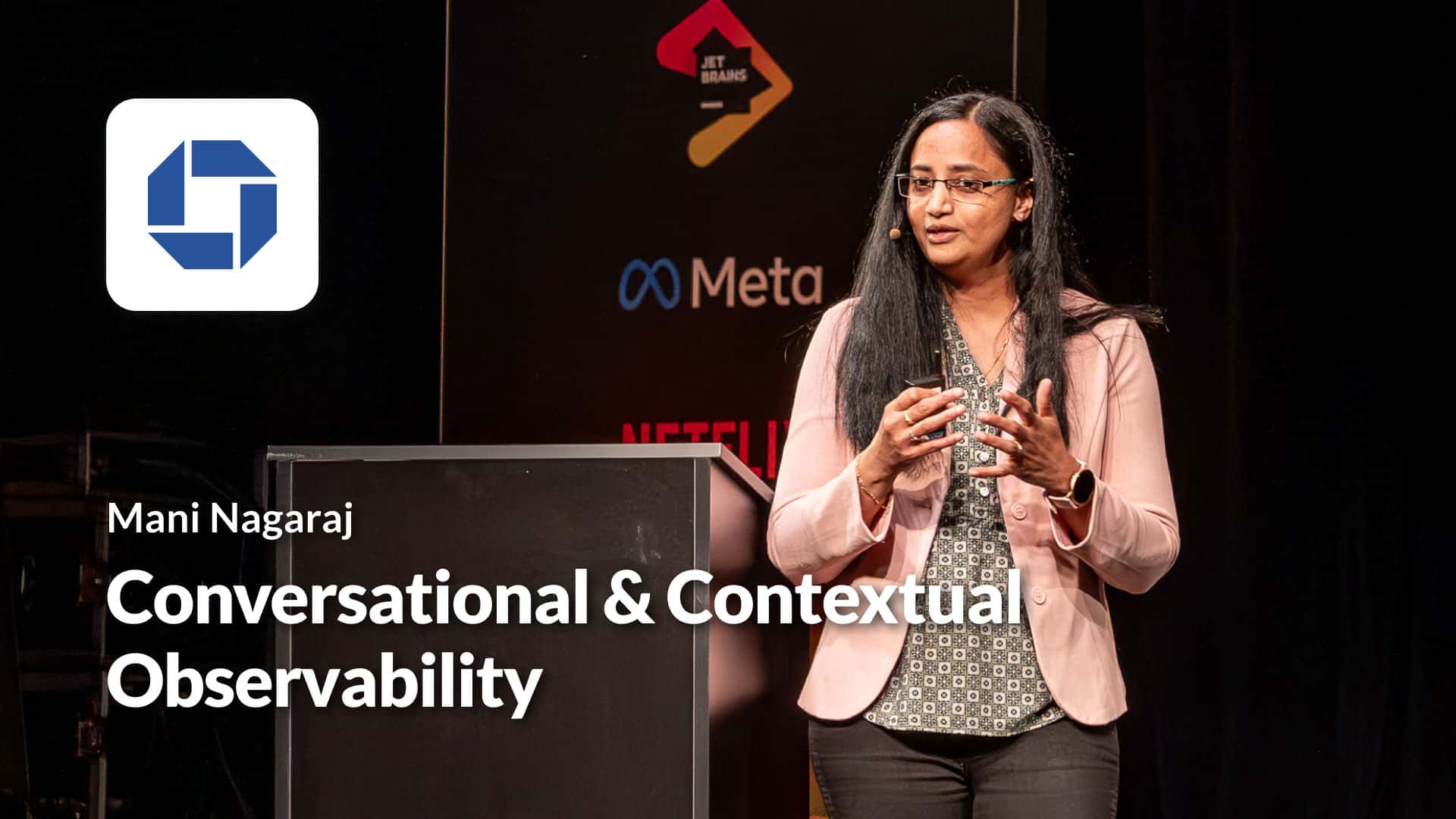
Conversational and Contextual Observability
The Engineering Platform and Integrated Experience team at JPMC tells their story about how they boosted developer productivity with LLMs. Leveraging metrics, traces, and logs, along with other data, they produced a self-service, natural language interface that assists developers, CI/CD engineers, product managers, and other stakeholders in rapidly discovering and applying insights to many sorts of queries.
Watch the video 
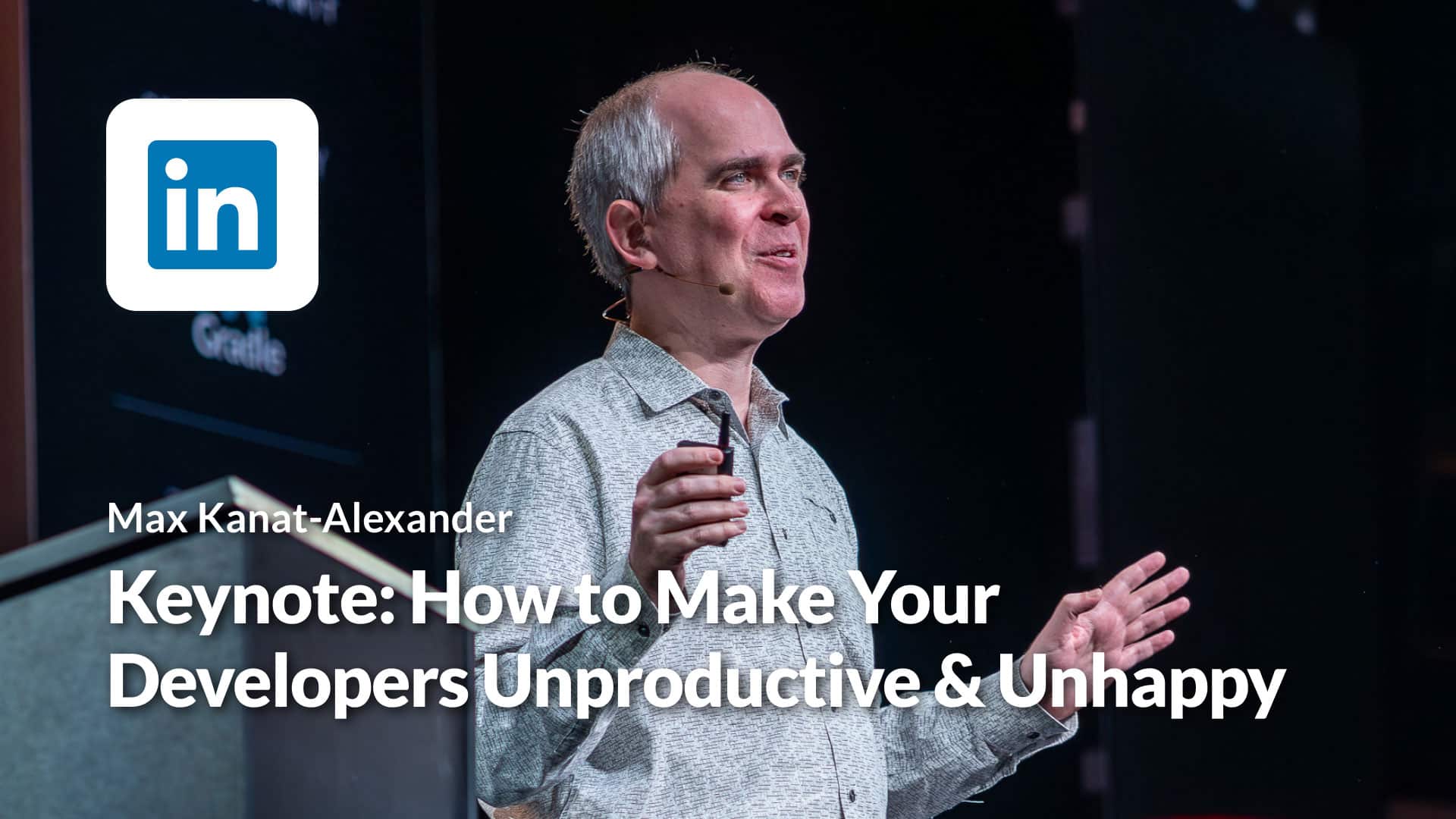
How to Make Your Developers Unproductive and Unhappy
Max’s keynote humorously explores developer unproductivity, before describing some more serious DPE strategies like internal surveys, diverse team tooling, and flexible standards. His 20 years of insights may provide clues to finding your own successful path to DPE excellence.
Watch the video 
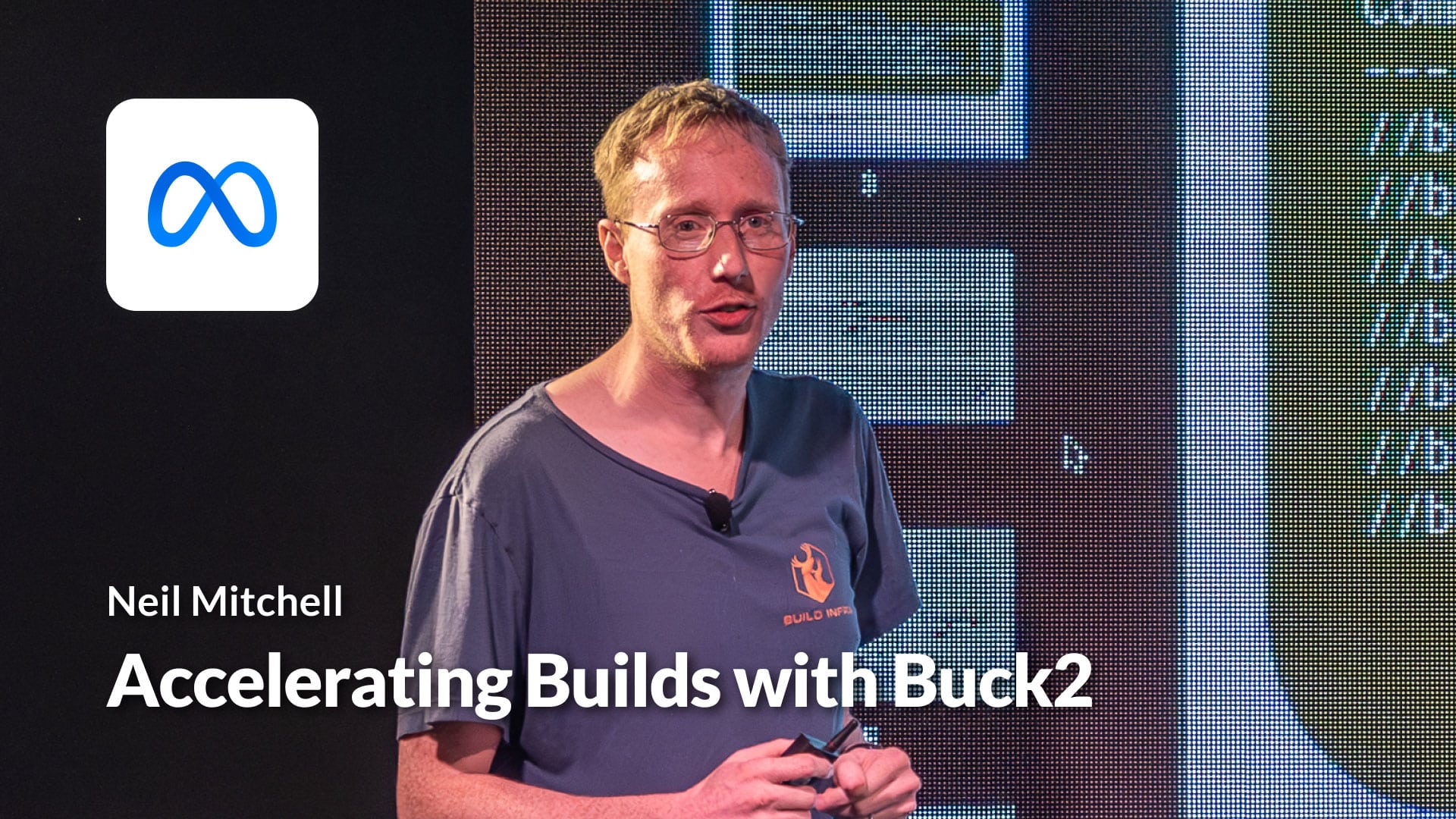
Accelerating Builds with Buck2
Neil at Meta describes developer productivity using one of Meta’s internal build tools, Buck 2. He discusses performance improvements made since Buck 1, new features like abstraction through APIs, parallel and incremental compute, remote execution, and the use of virtual files to improve developer productivity.
Watch the video 
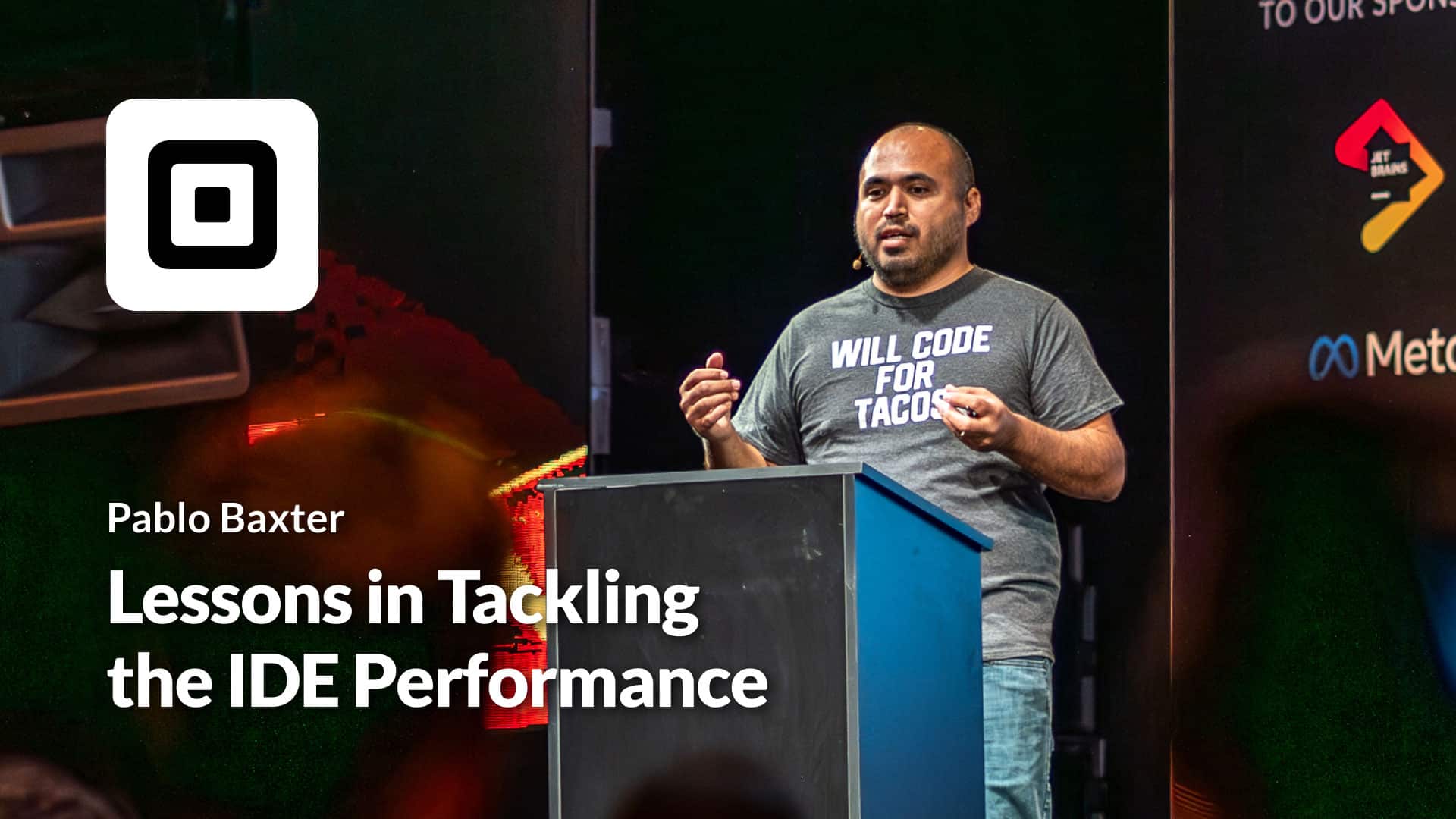
Lessons in Tackling the IDE Performance
Block has one of the largest Android application development teams on the planet. They share how they managed their IDE scaling challenges while growing to 4500+ modules. Get their lessons learned from managing sync times, memory leaks, and more. If you have large projects and are struggling with IDE experience, this talk is for you.
Watch the video 
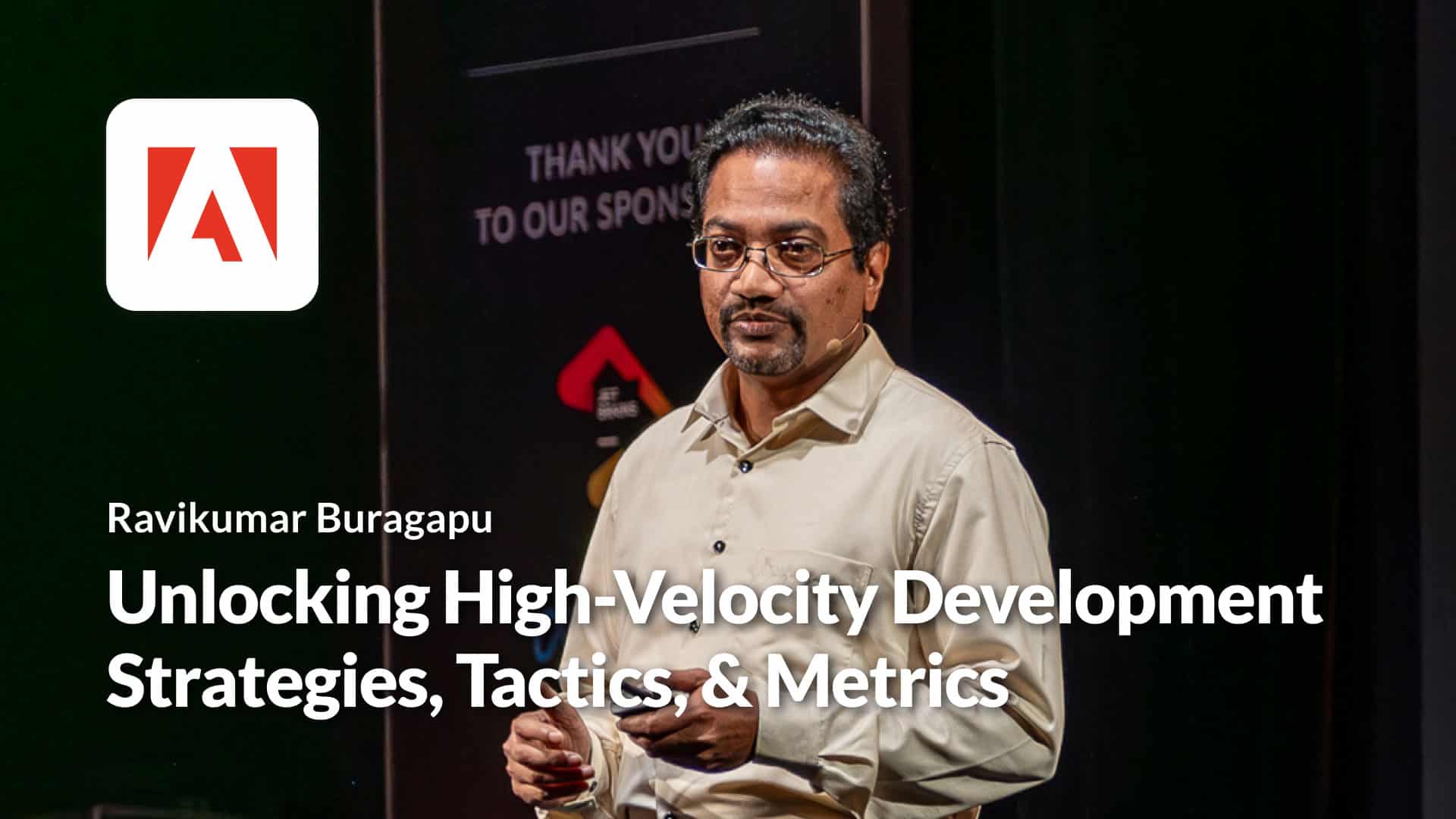
Unlocking High-Velocity Development Strategies, Tactics, and Metrics
Ravikumar at Adobe discusses seven productivity factors for high-velocity teams, including internal developer platforms, tailored metrics from DORA and SPACE frameworks, and the role of Generative AI at Adobe. He emphasizes the positive impact of internal platforms for enhancing developer productivity as well as how Generative AI is beginning to transform DPE at Adobe.
Watch the video 
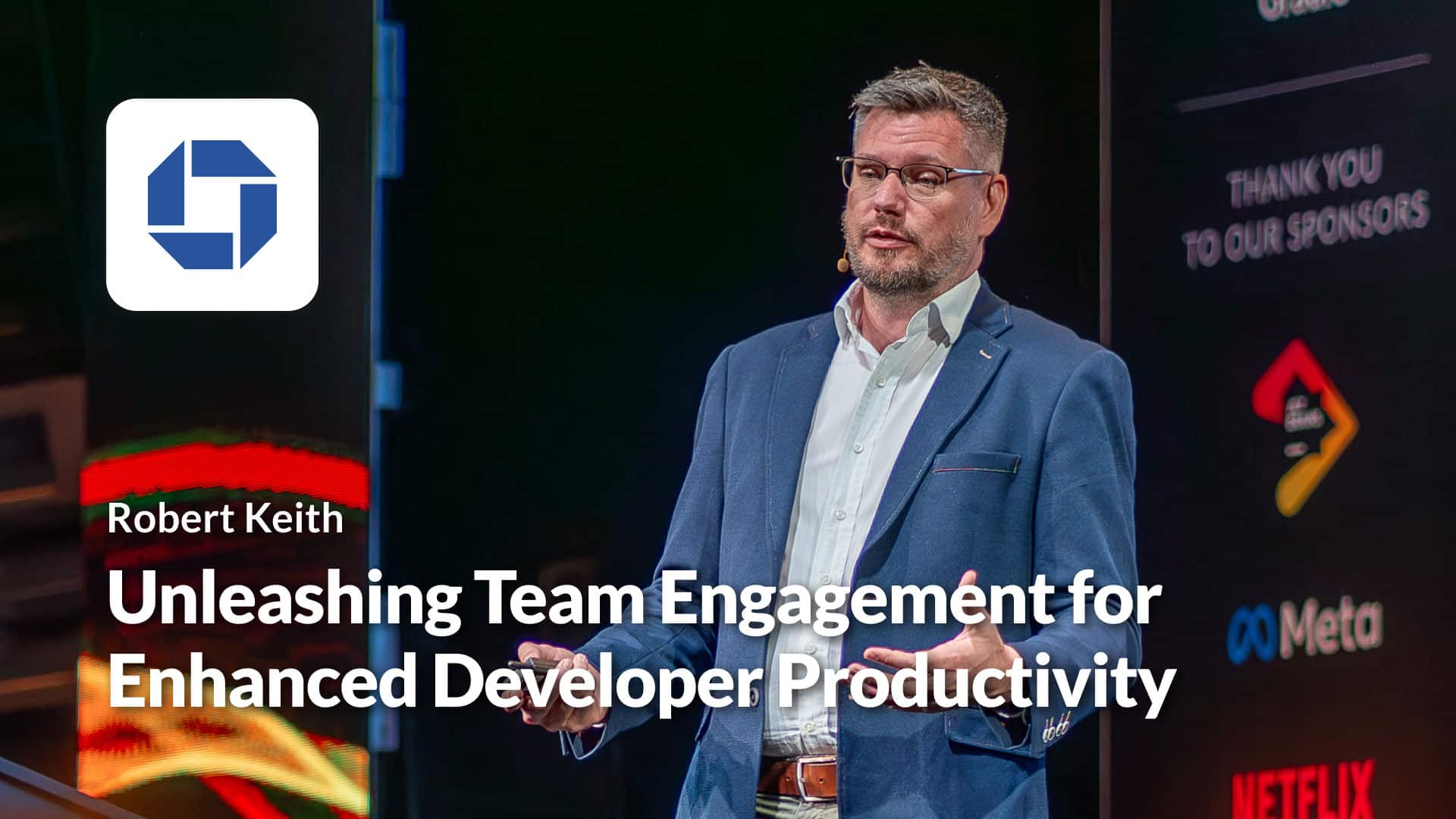
Unleashing Team Engagement for Enhanced Developer Productivity: Empowering Engineers Beyond Technical
Rob from JPMC shares his lessons-learned from capturing developer experience metrics across their developer organization. He shares what metrics led to developer happiness and how those metrics impacted job satisfaction and productivity.
Watch the video 

From Myth to Legend: How Generative AI Can Supercharge Productivity to Create 10x Developers
Gautam and Serdar at Uber explore whether Generative AI can match the productivity of a “10x developer”. They discuss results using Generative AI for tasks like refactoring, maintaining tests, incident management, and documentation enhancement. Their analysis reveals that while Co-Pilot and other tools make developers feel more productive, they produce only an average of 1-2 lines of usable code.
Watch the video 
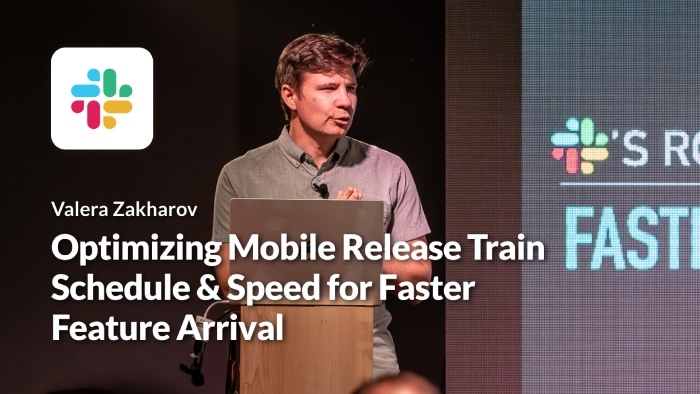
Optimizing Mobile Release Train Schedule and Speed for Faster Feature Arrival
Valera explains why ad hoc code cleanup doesn’t scale. He shares his team’s lessons-learned from handling tech debt at Slack with a code health score system. The impact of the Slack health score case study and their stats on pull requests is particularly interesting. Pro Tip: code health and tech debt impacts developer happiness.
Watch the video 
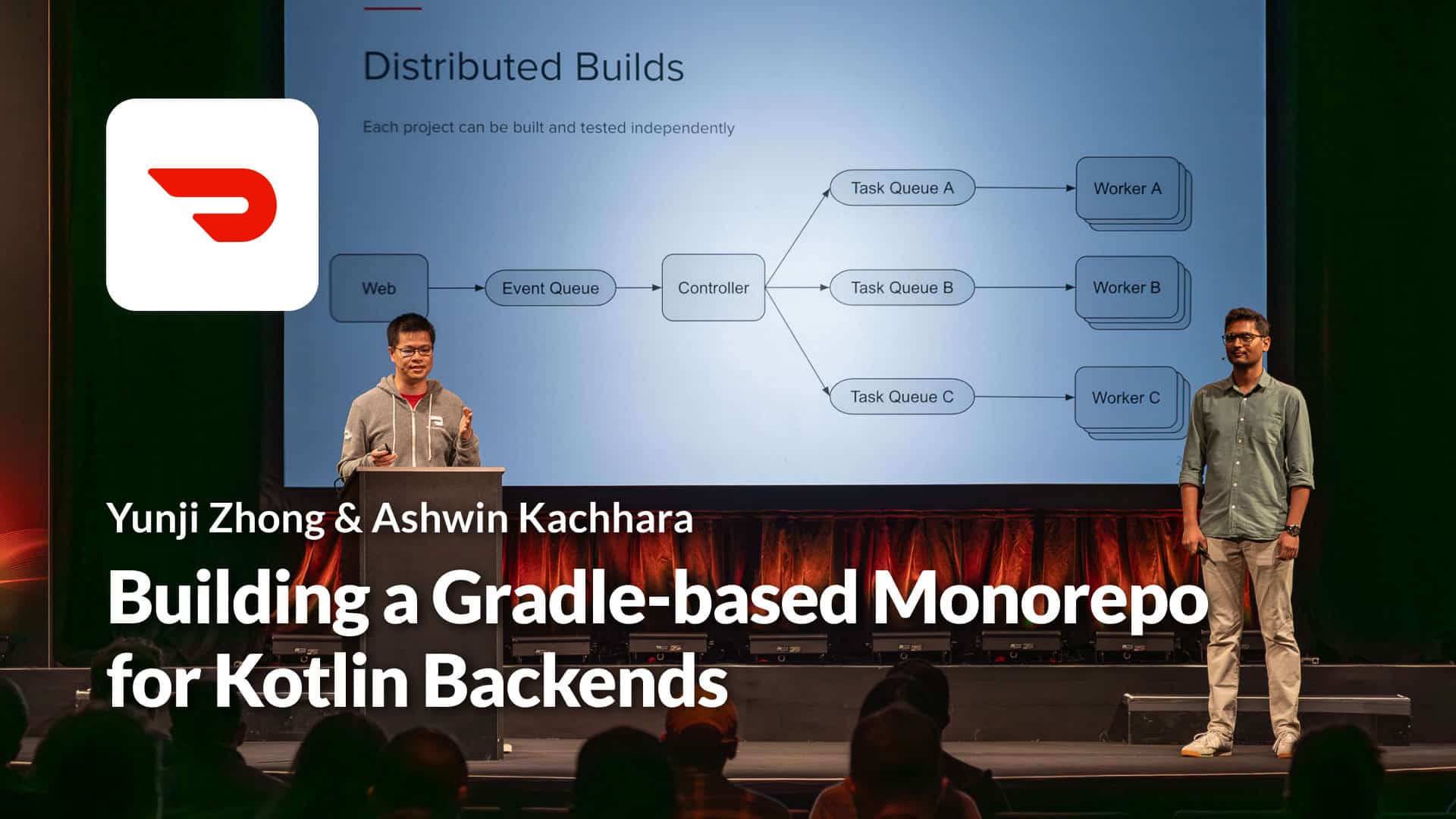
Building a Gradle-based Monorepo for Kotlin Backends
The Doordash team share their experiences exploring whether to use Gradle vs Bazel for building a mono repo. They share the challenges they faced and how certain Gradle Build Tool features helped solve them. They discuss custom plugins, composite builds, and version catalogs. If you’re working on builds/tests in large repos, this talk is for you.
Watch the video 
